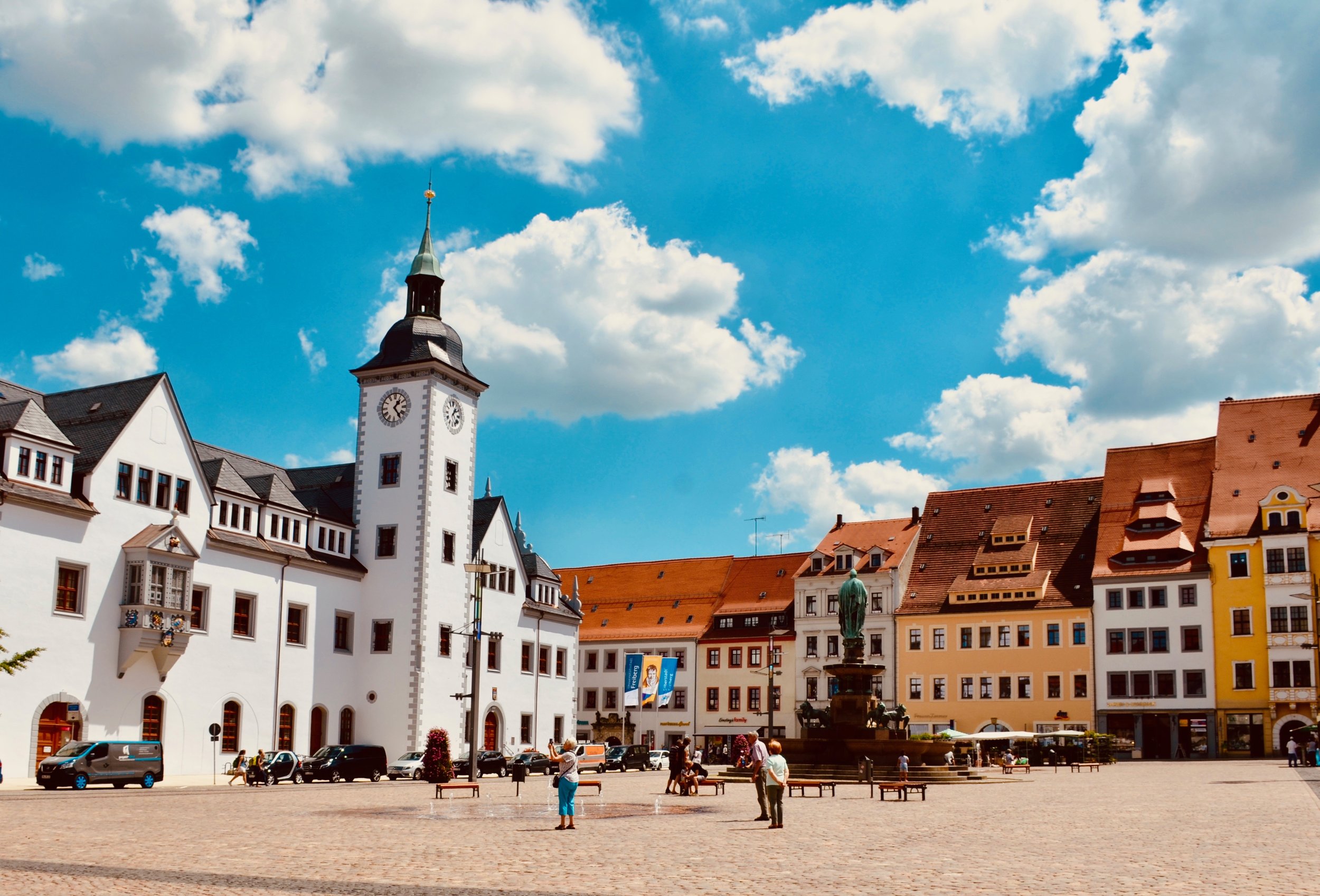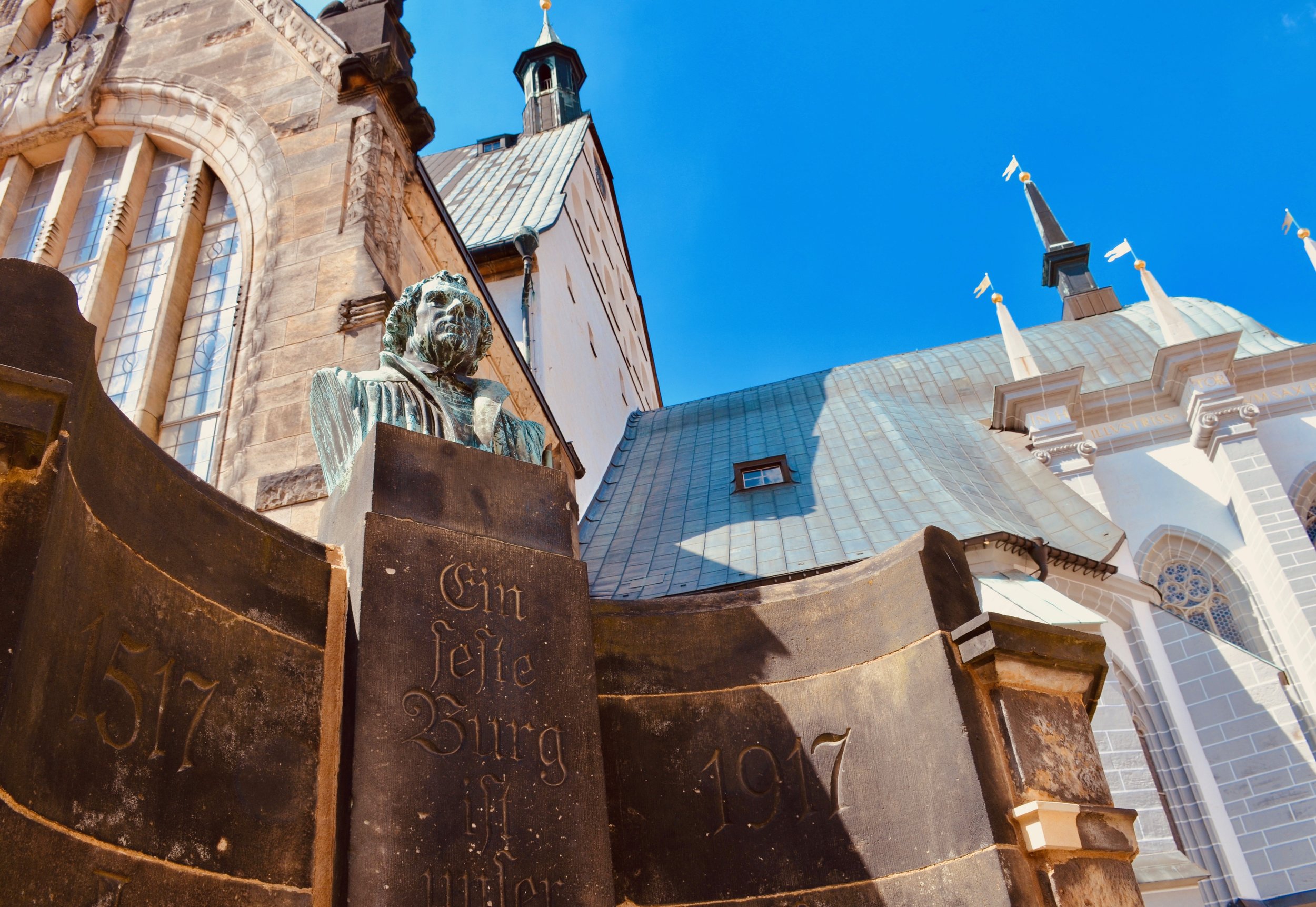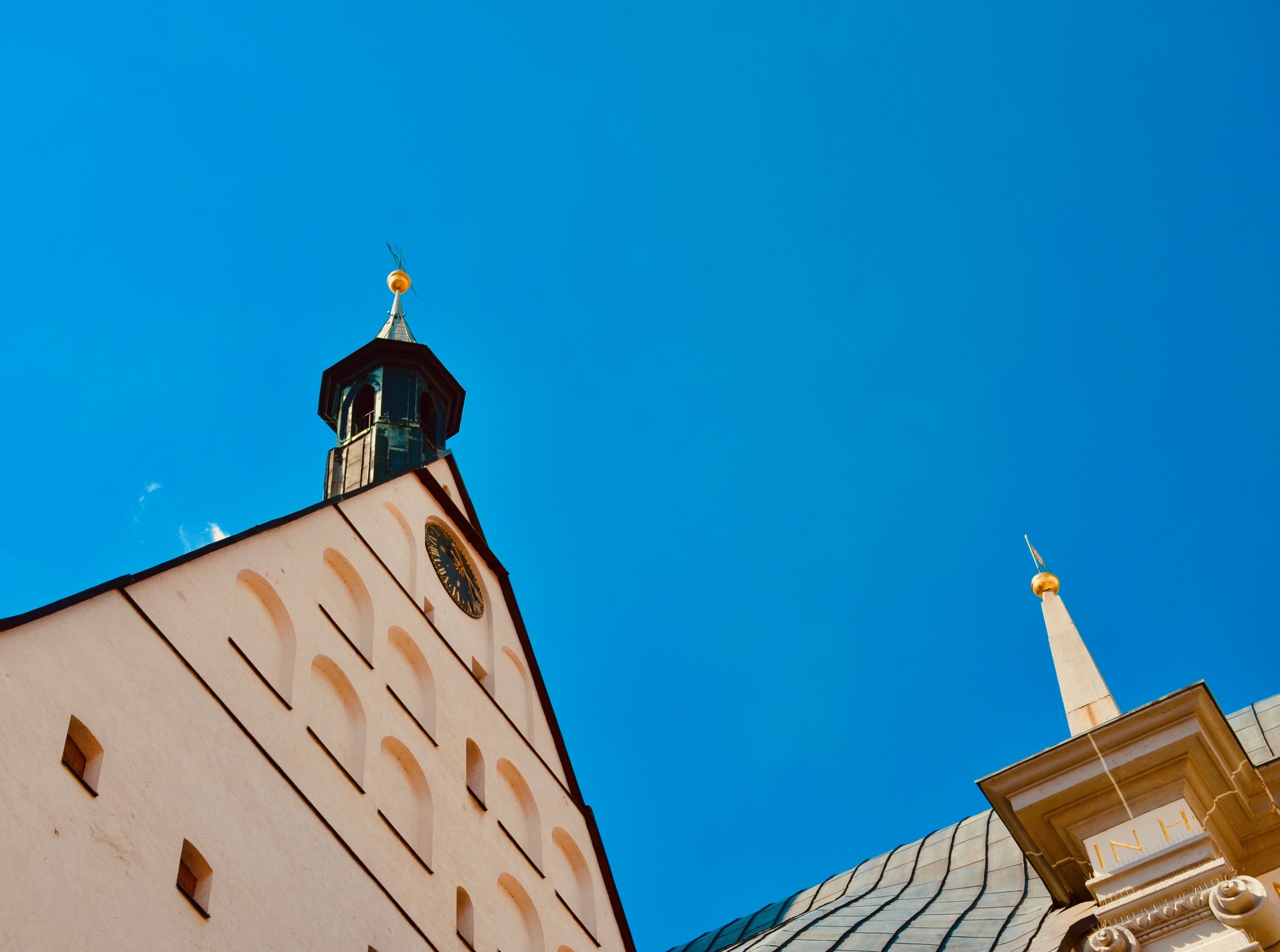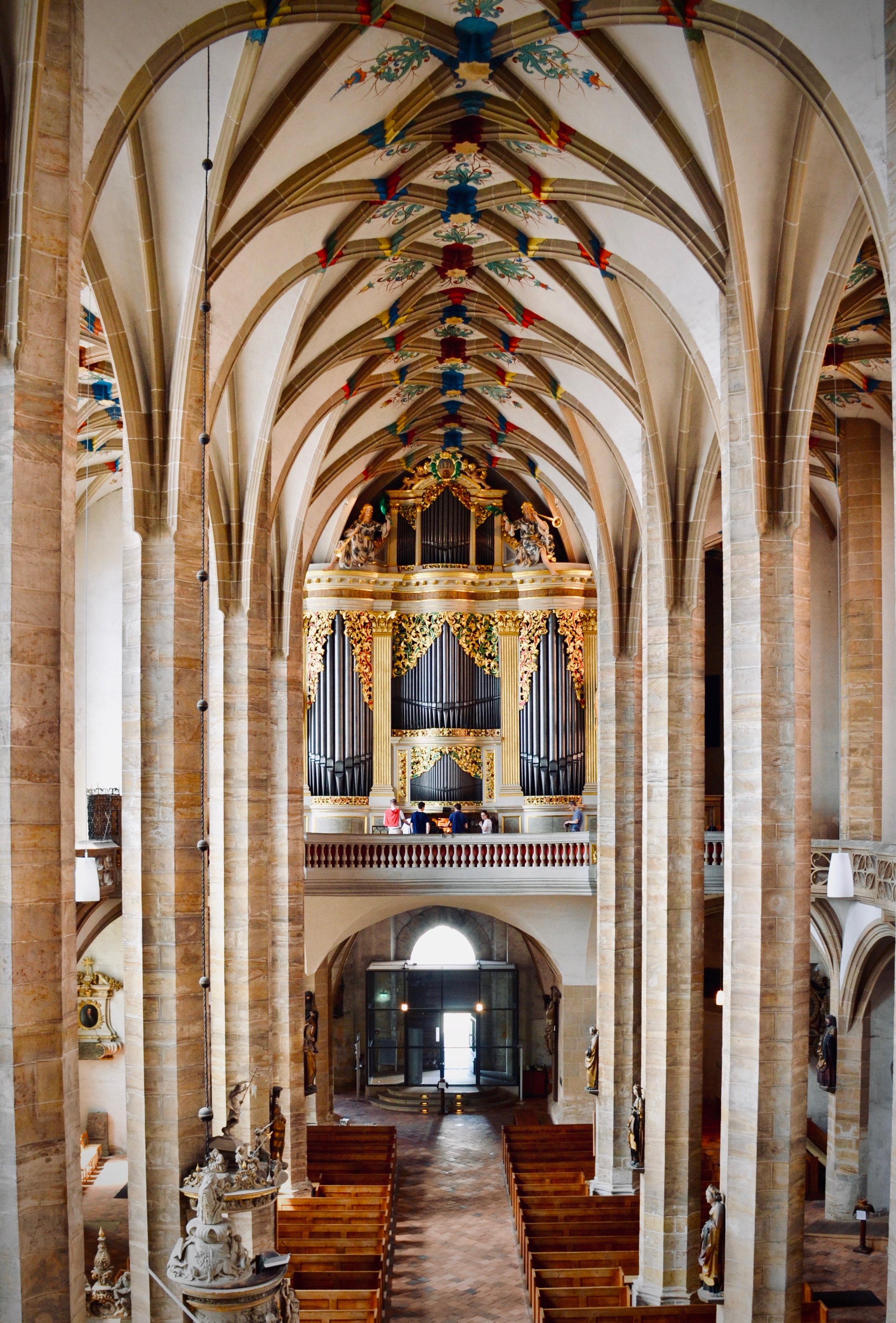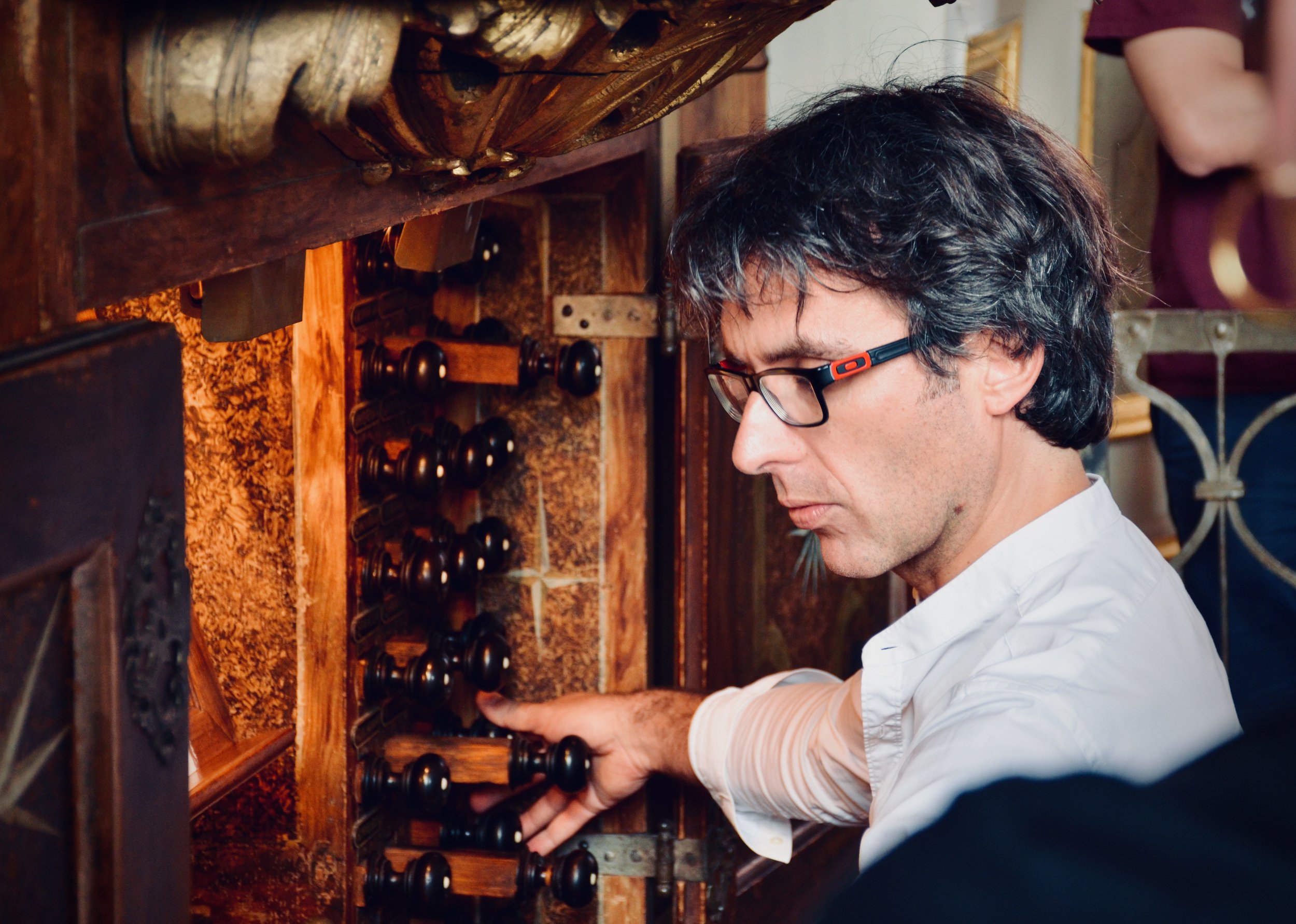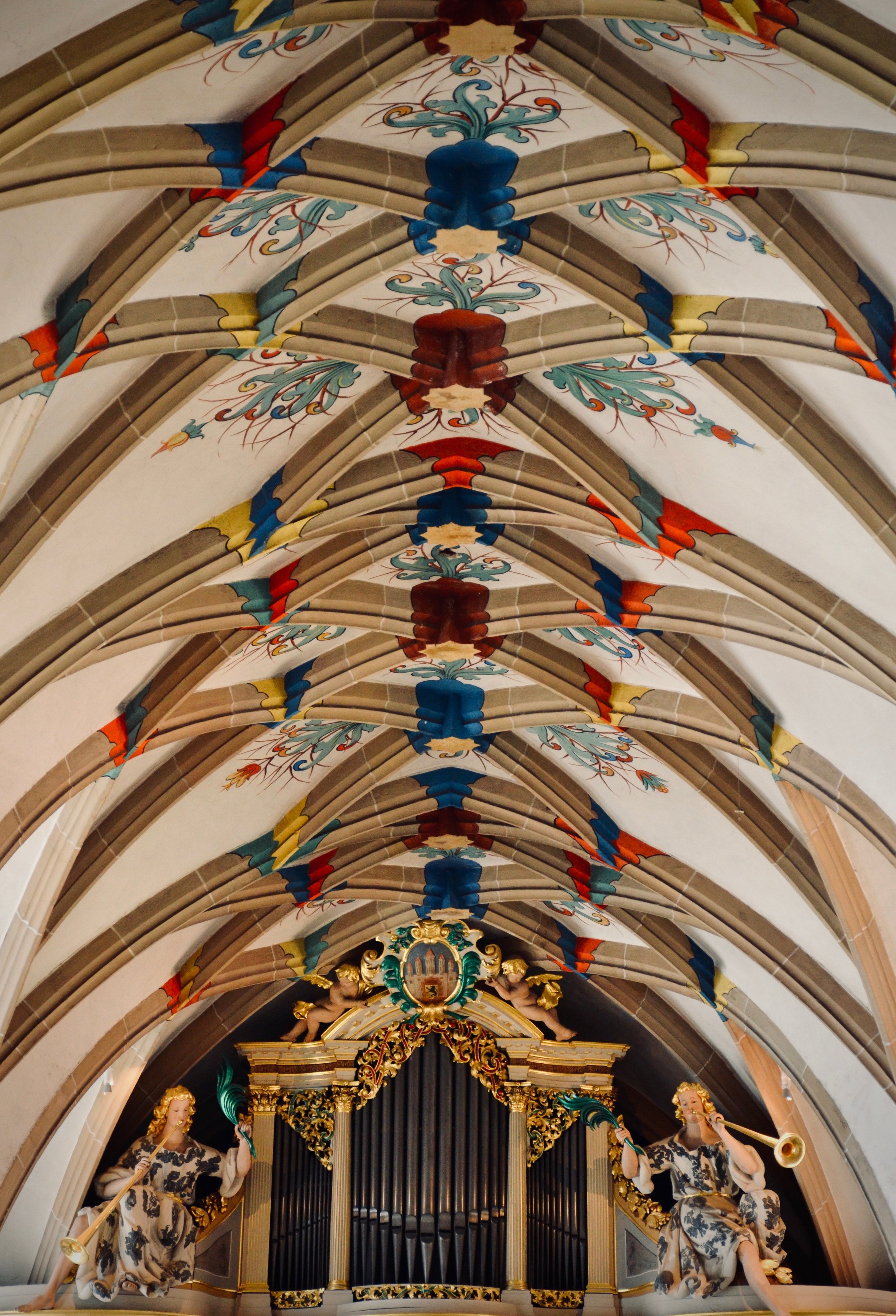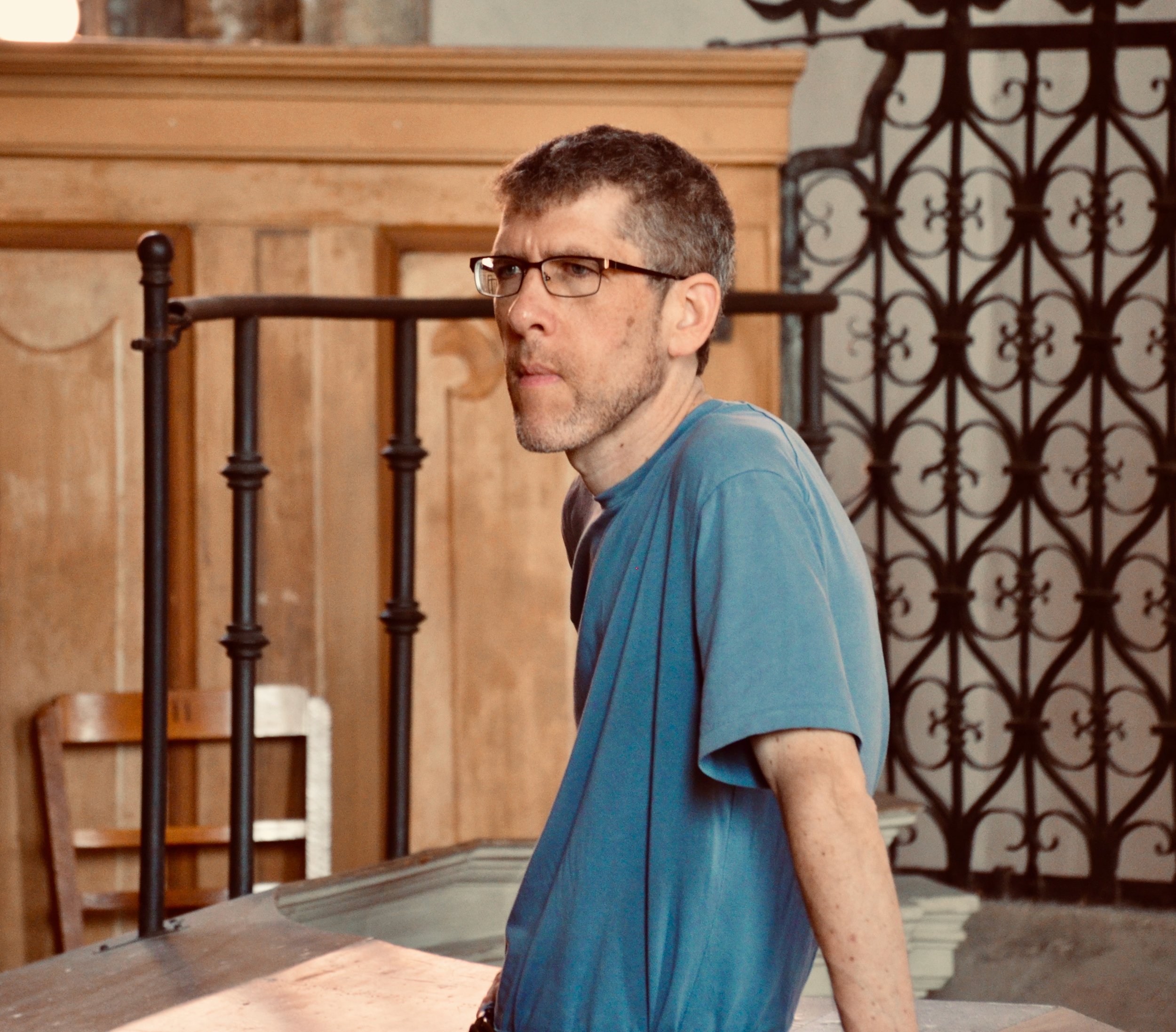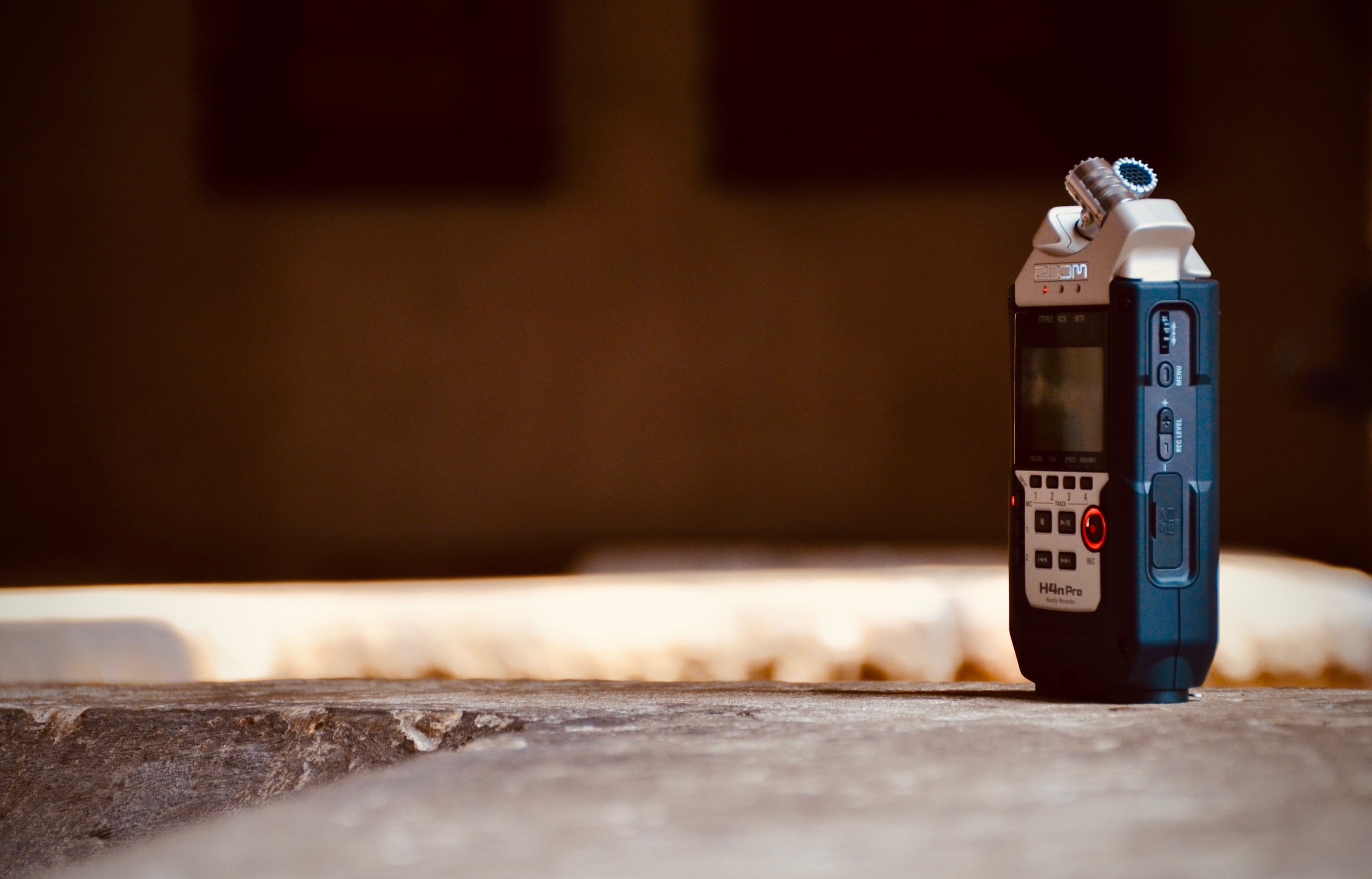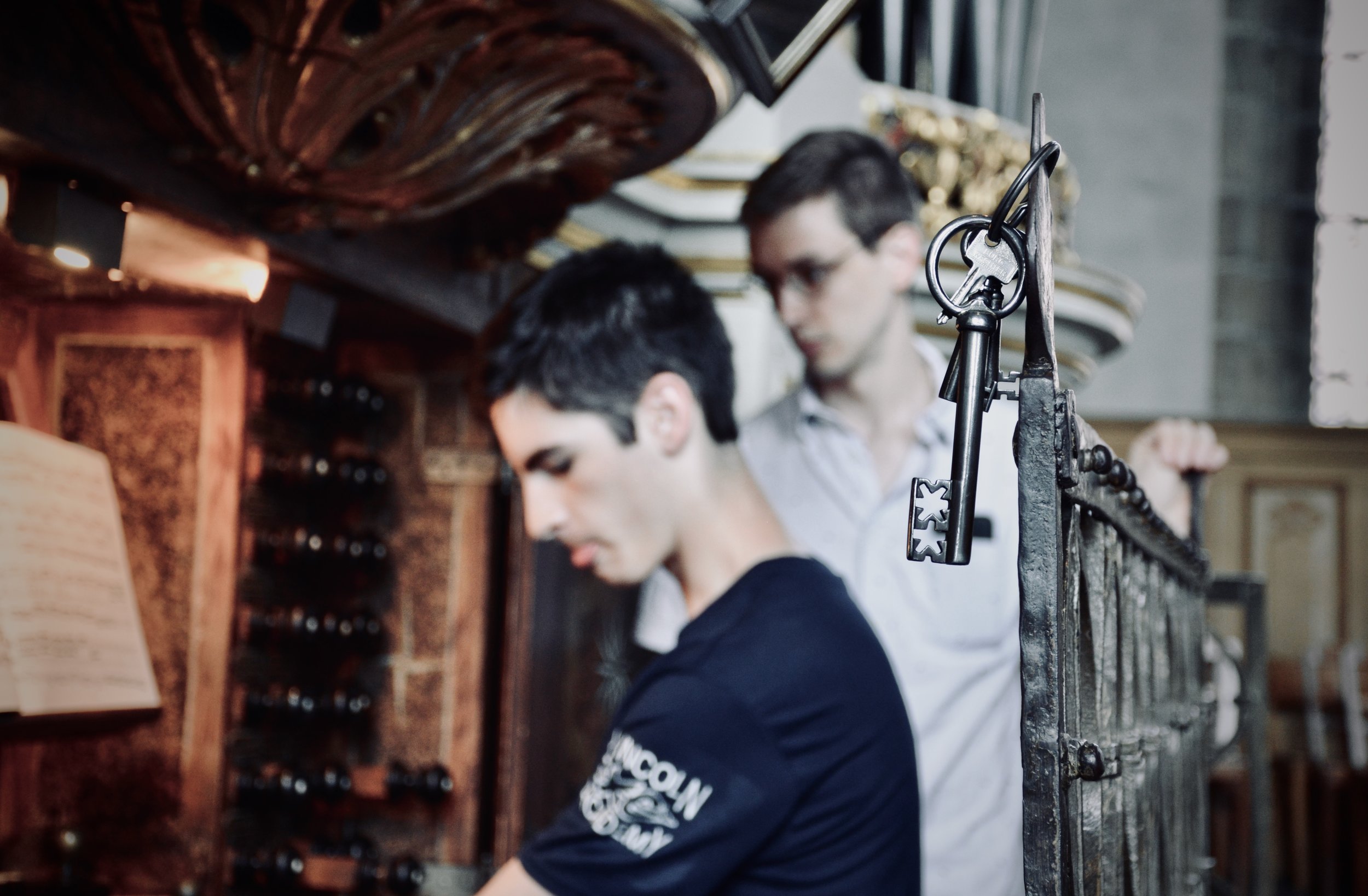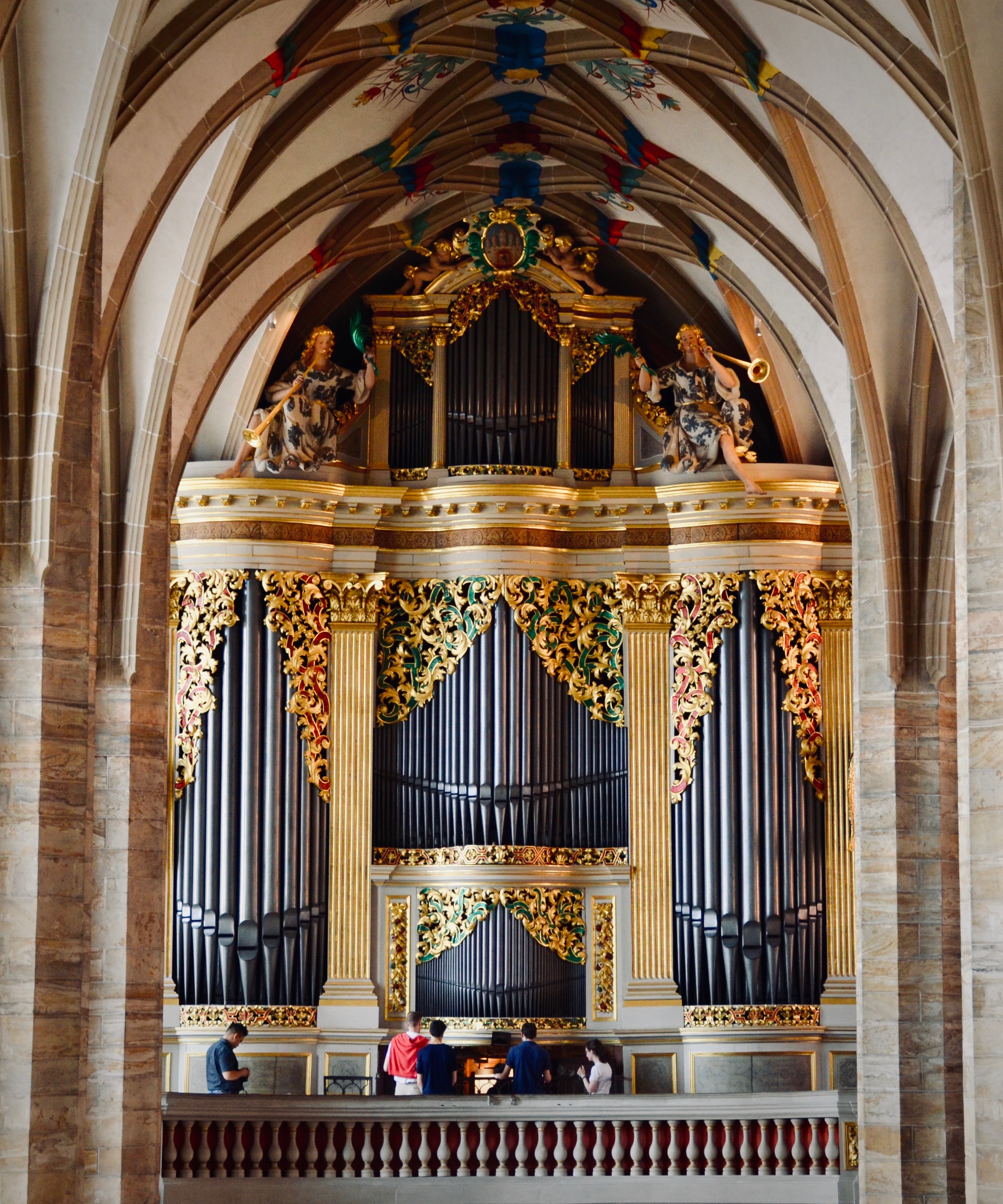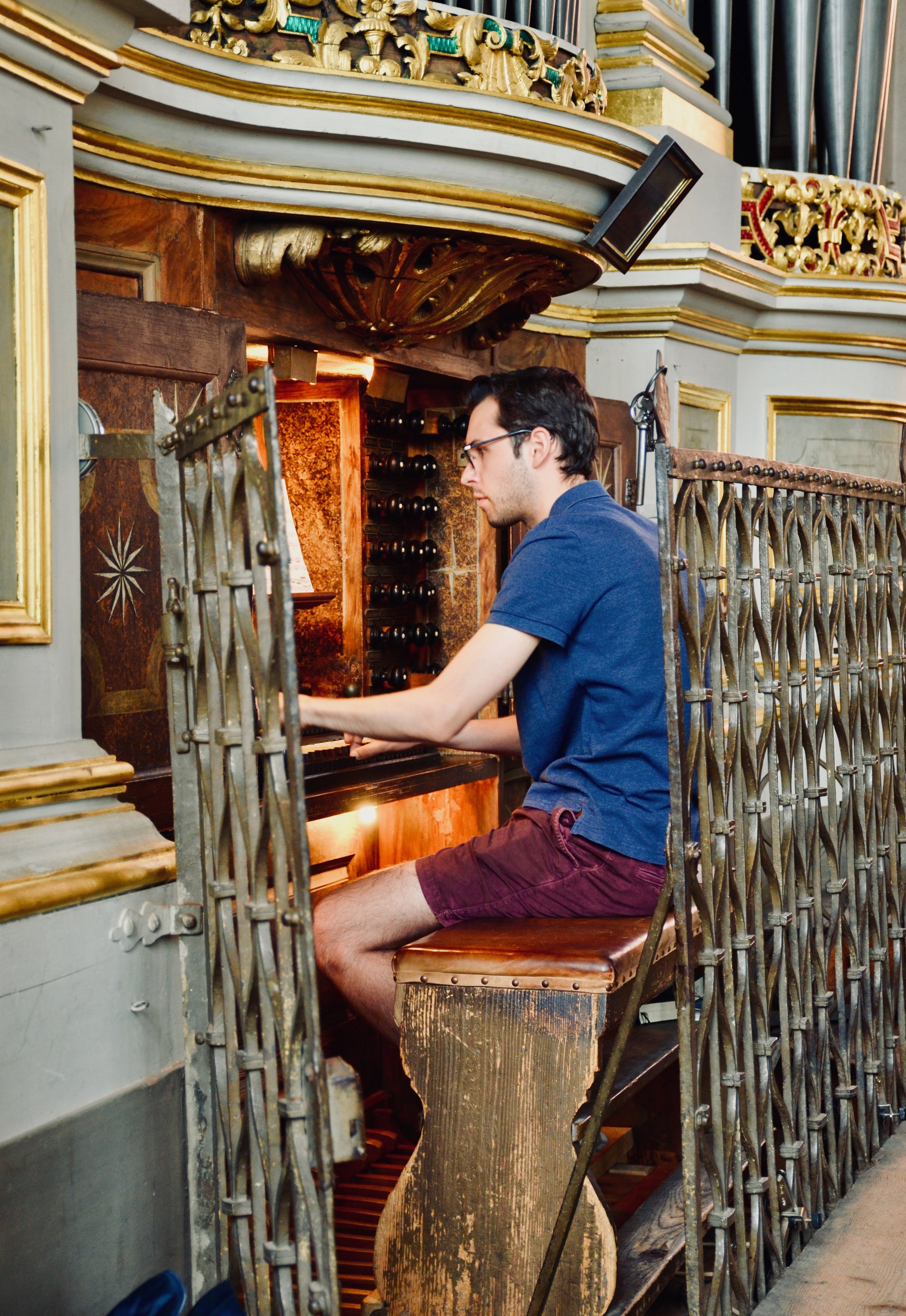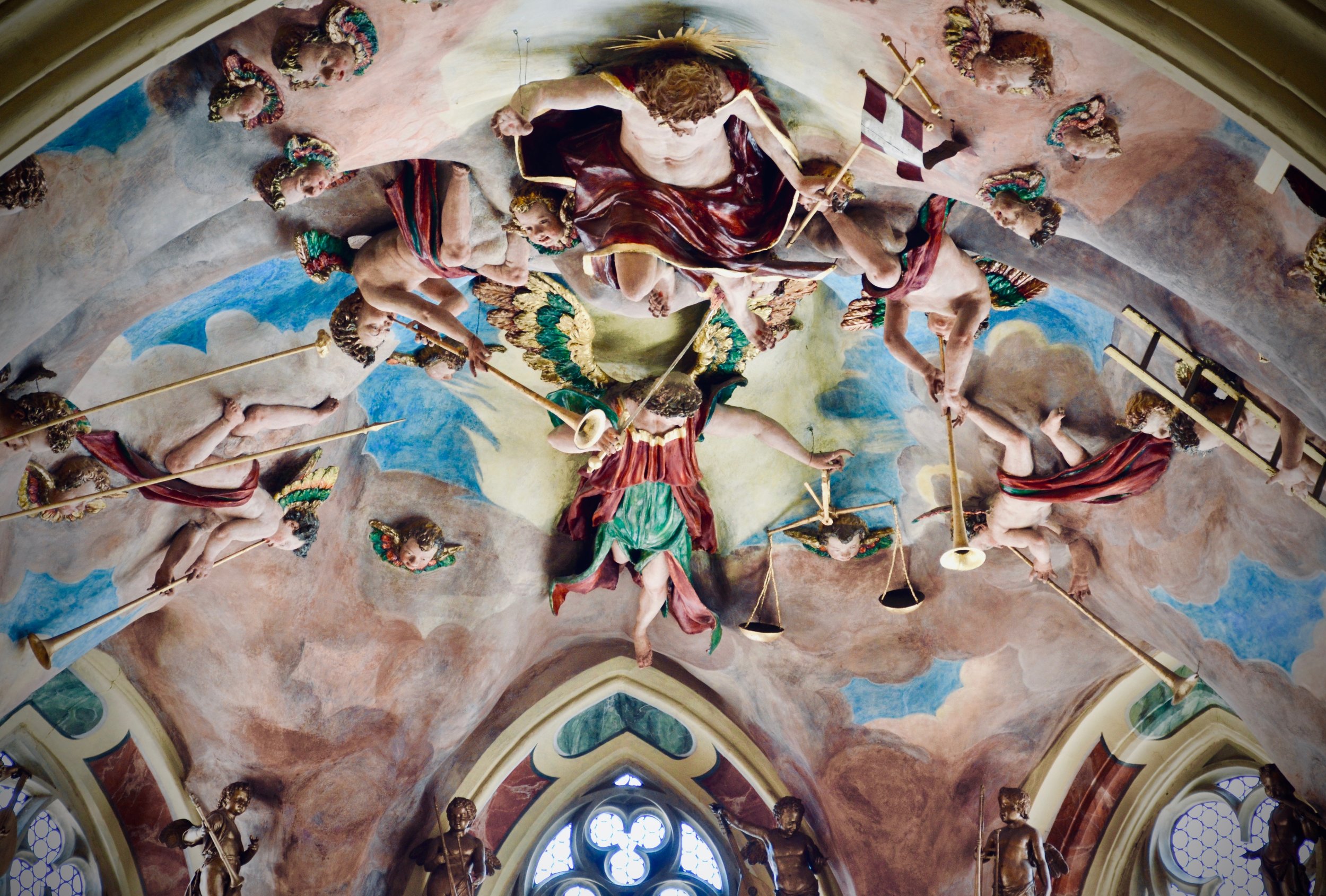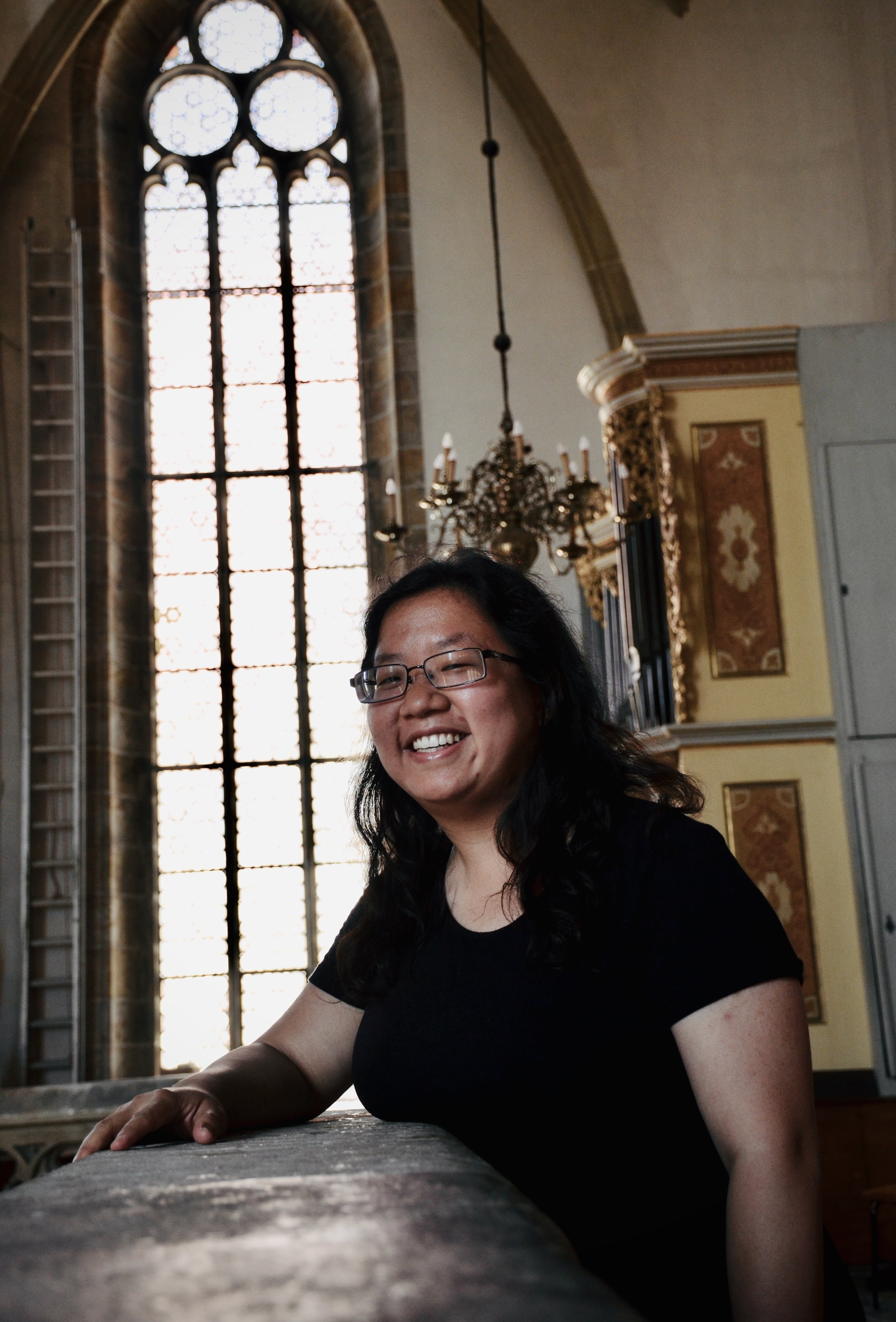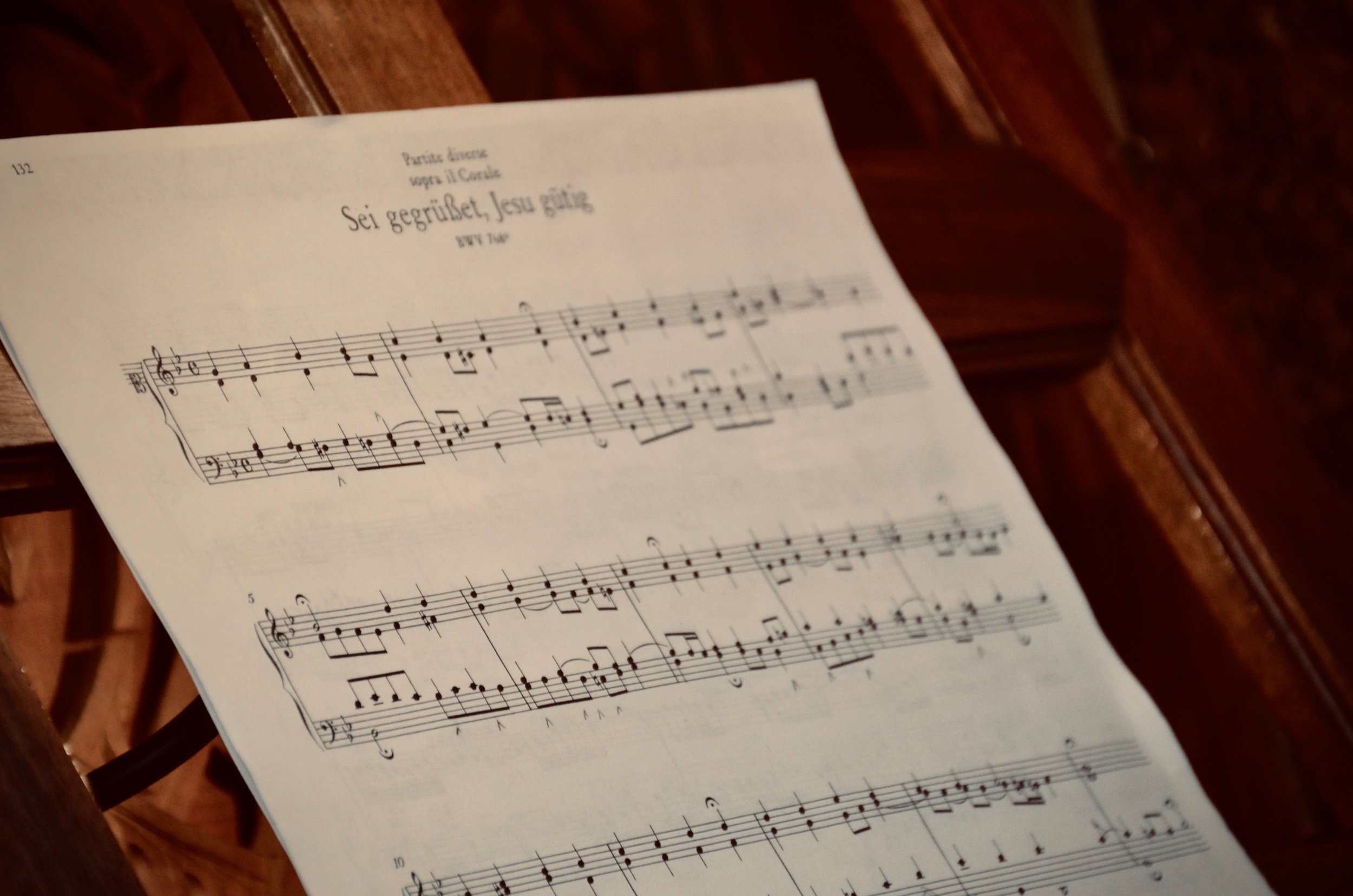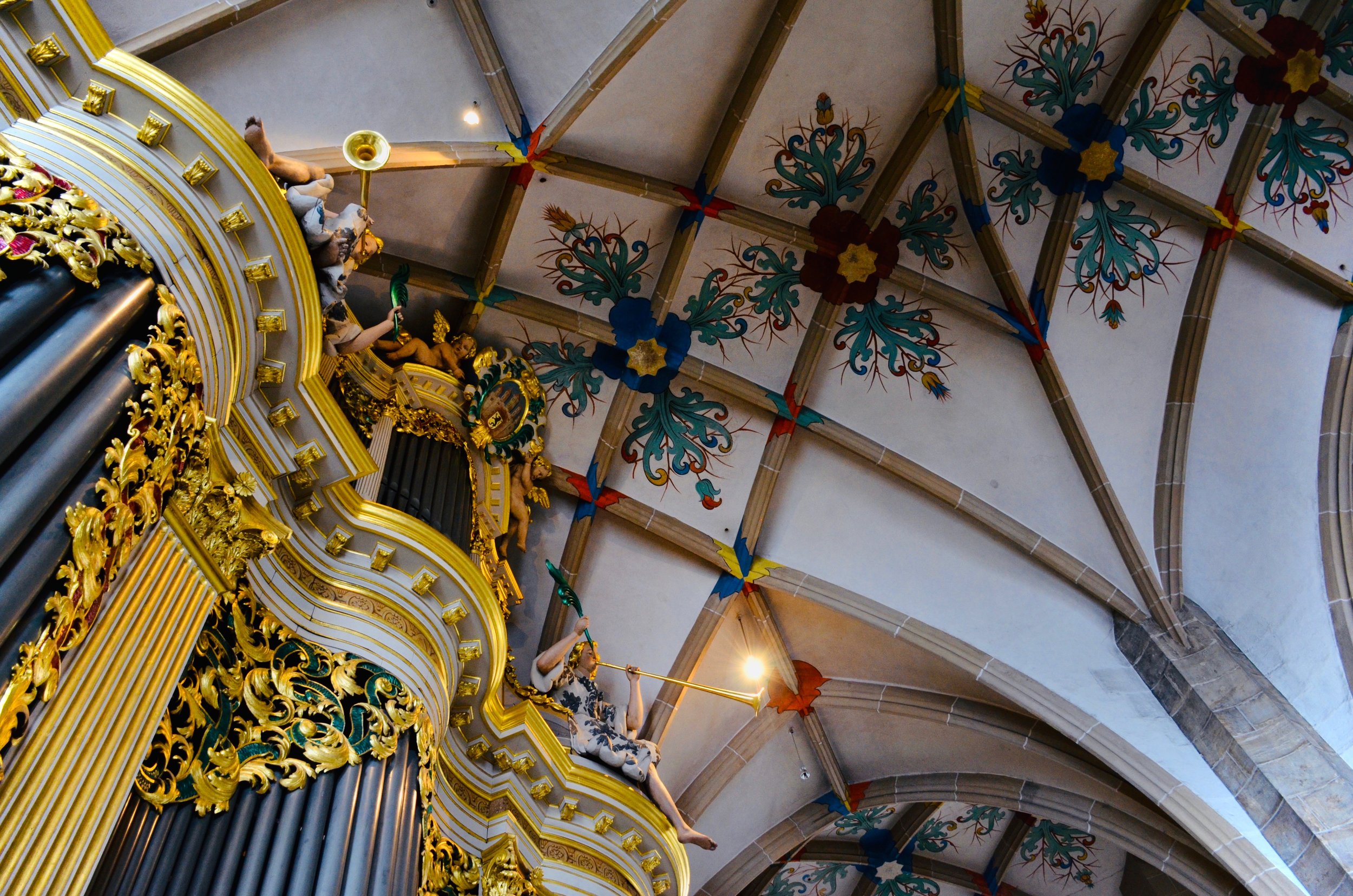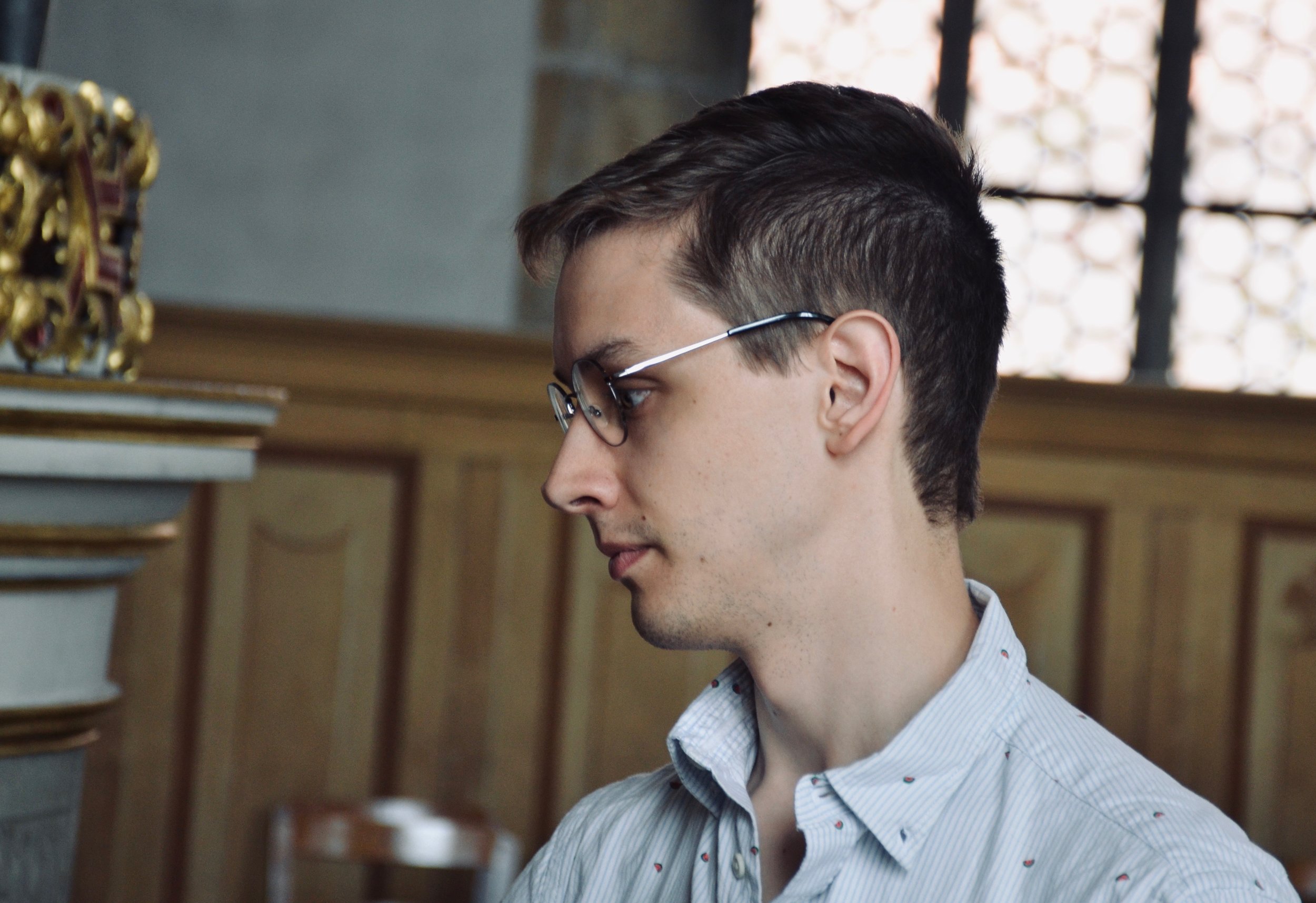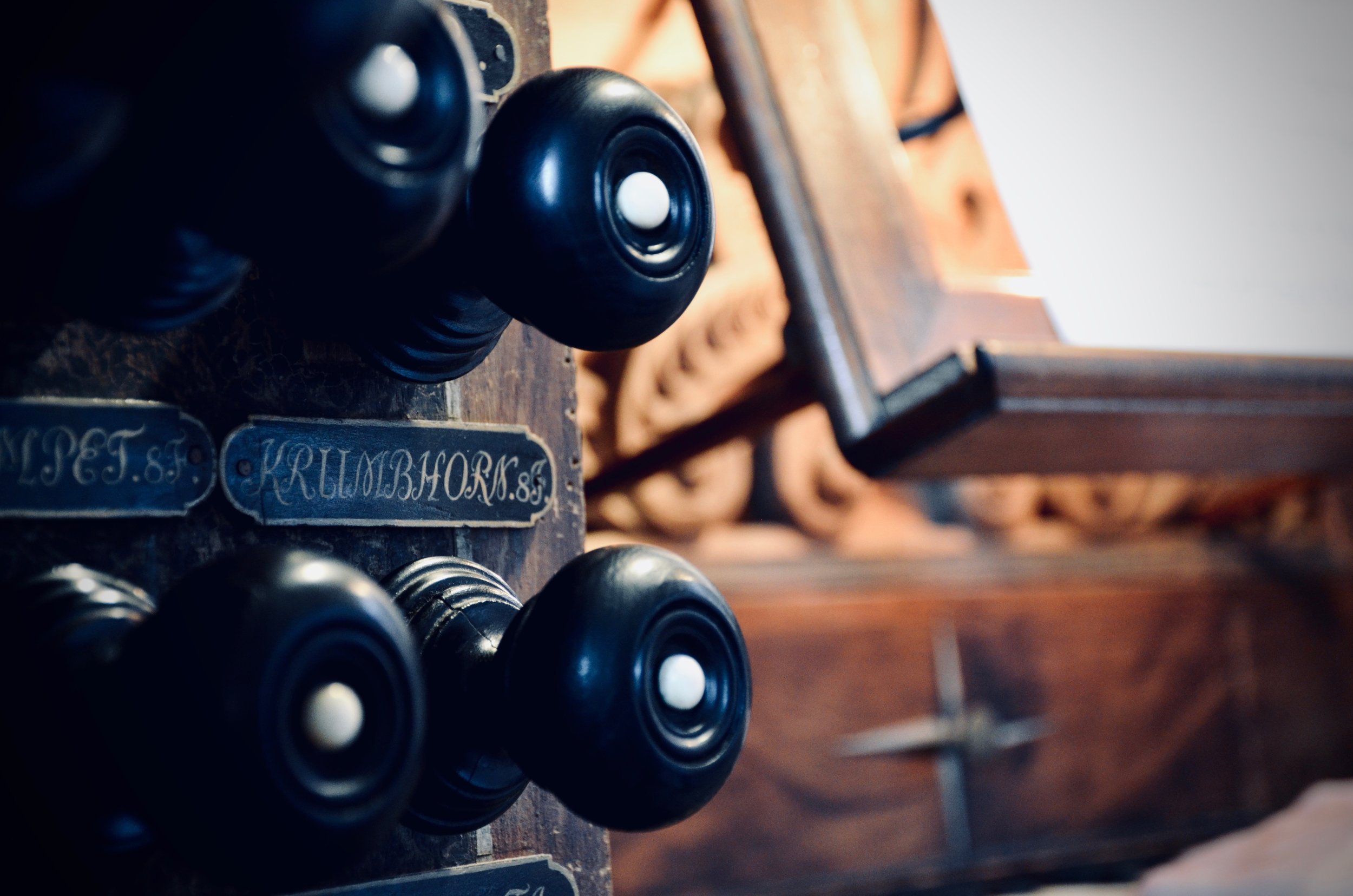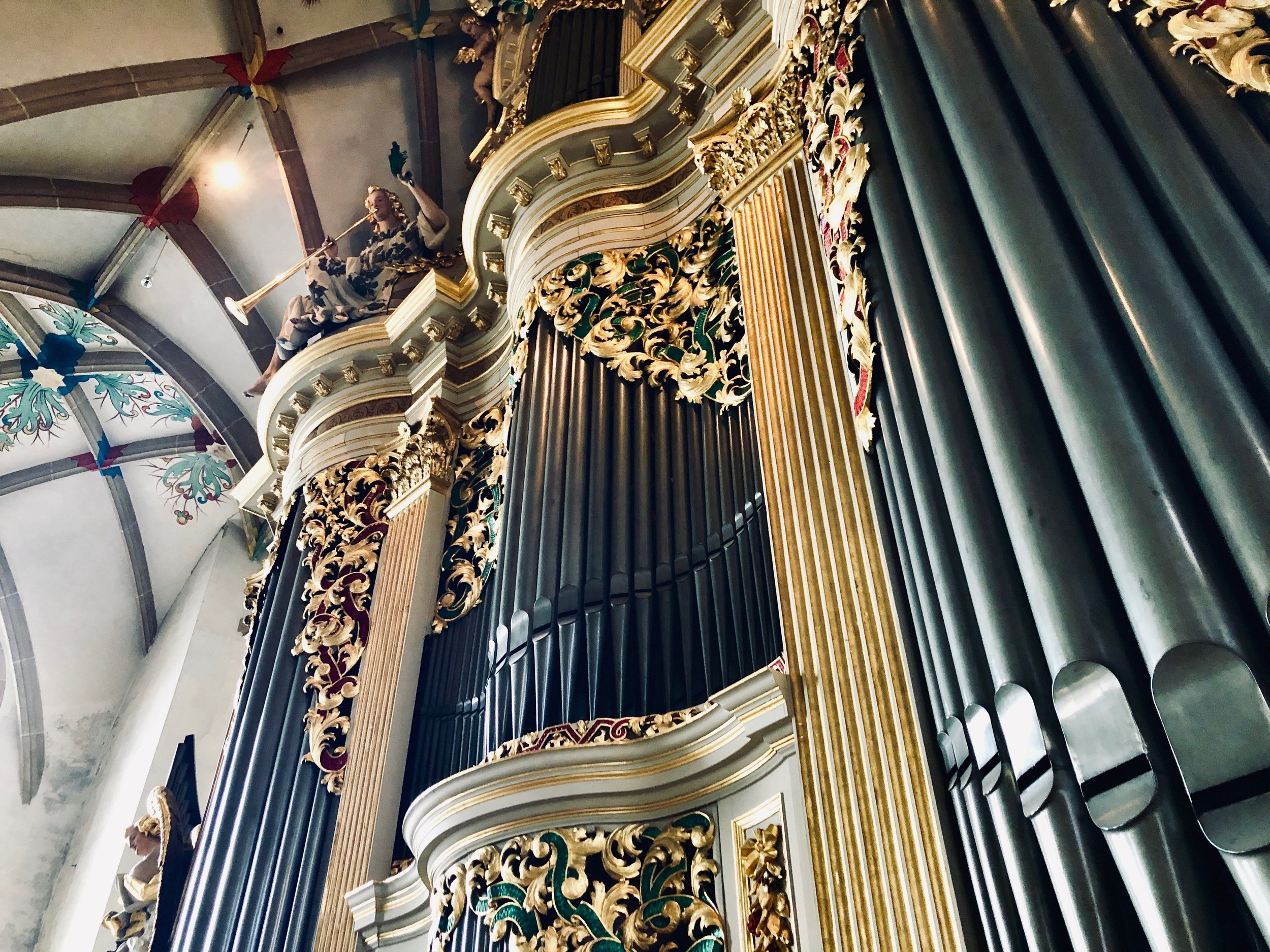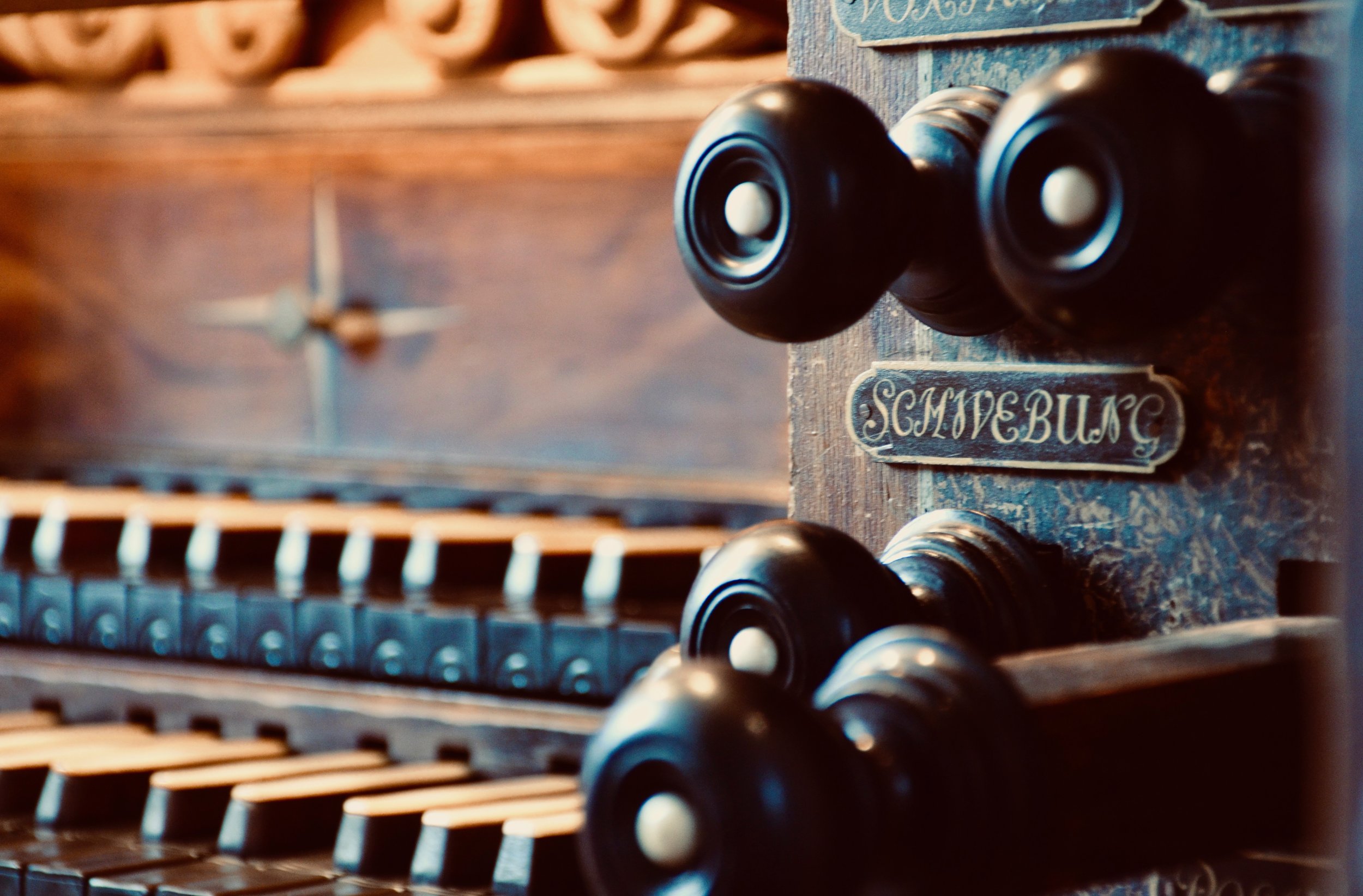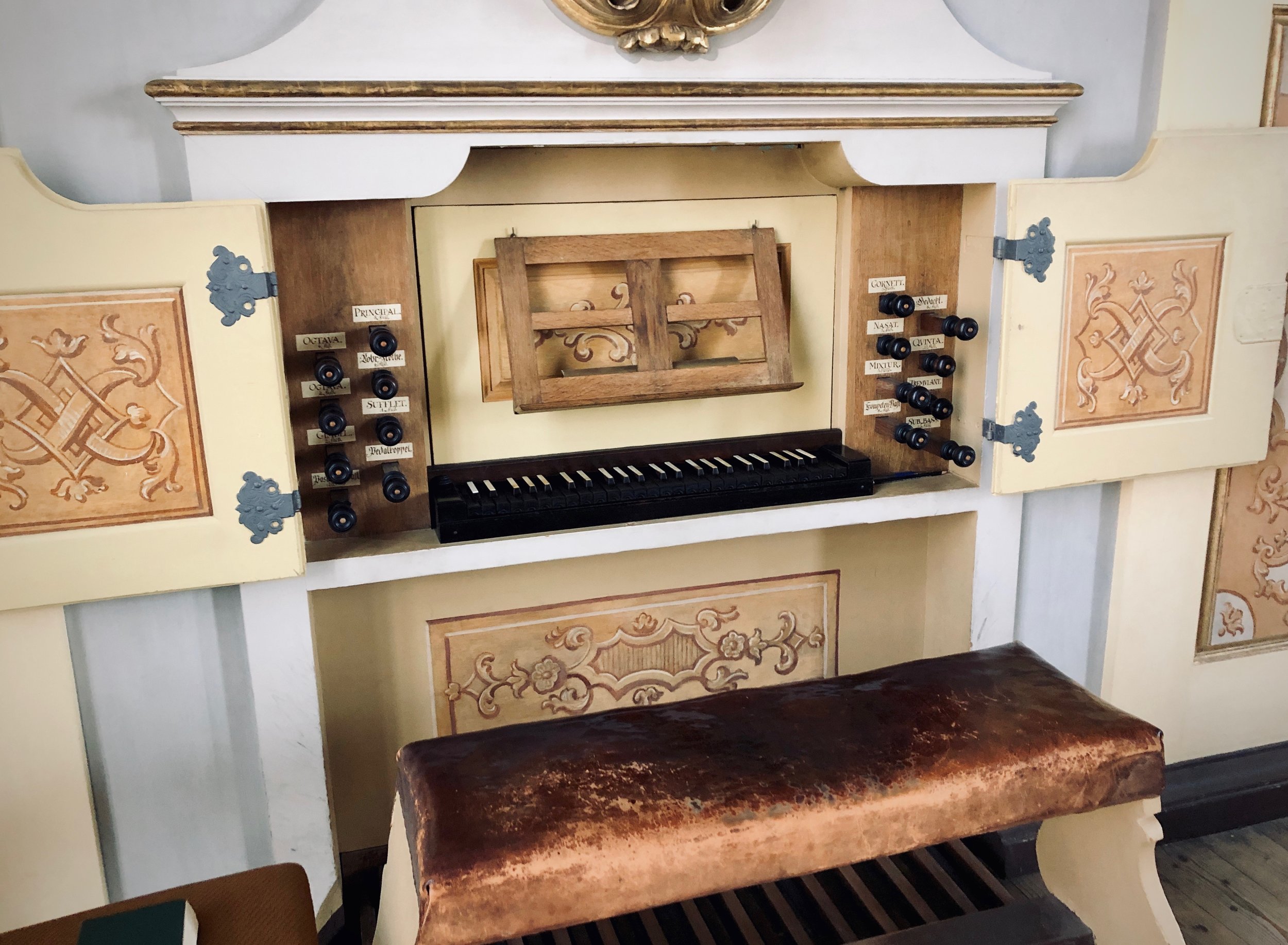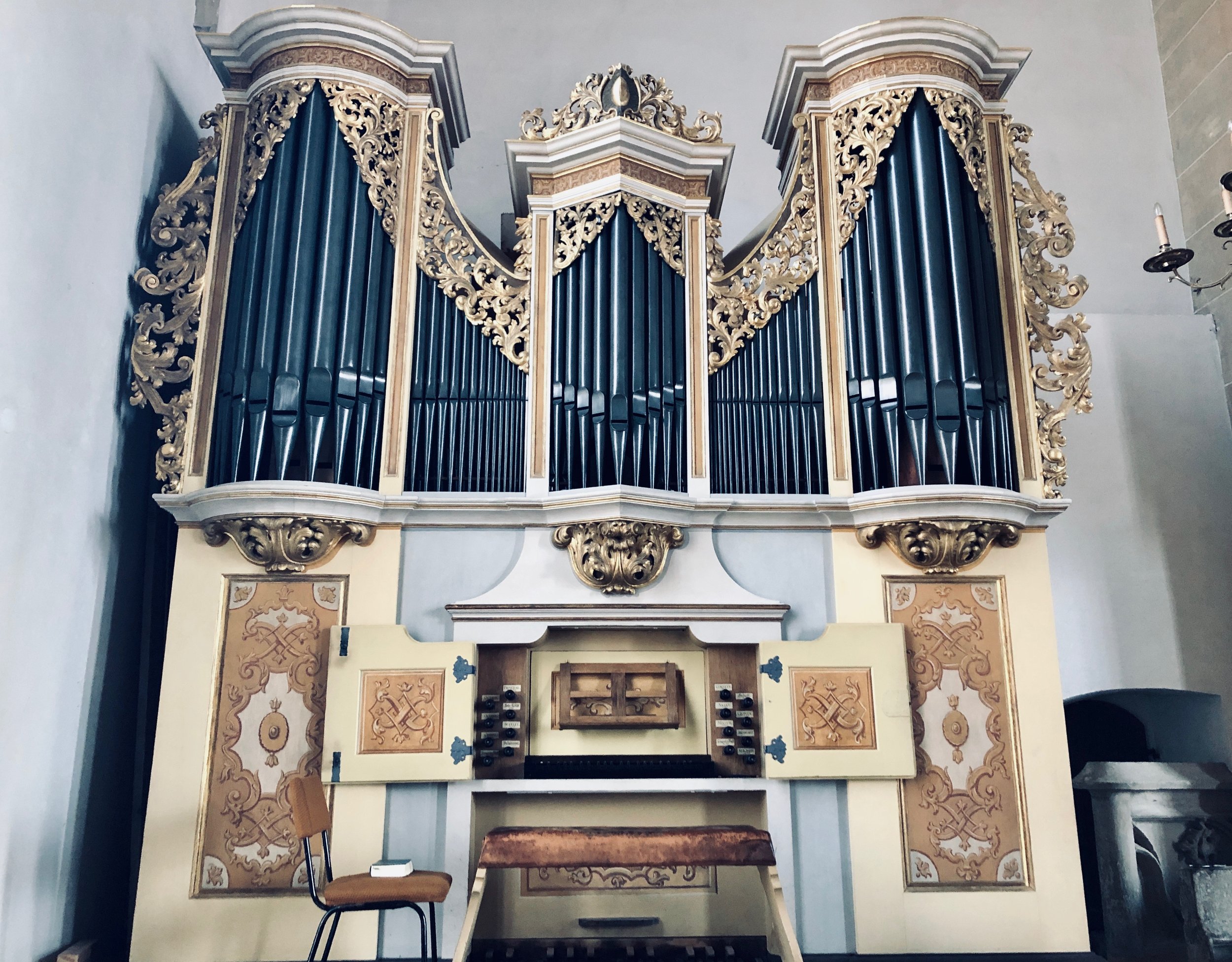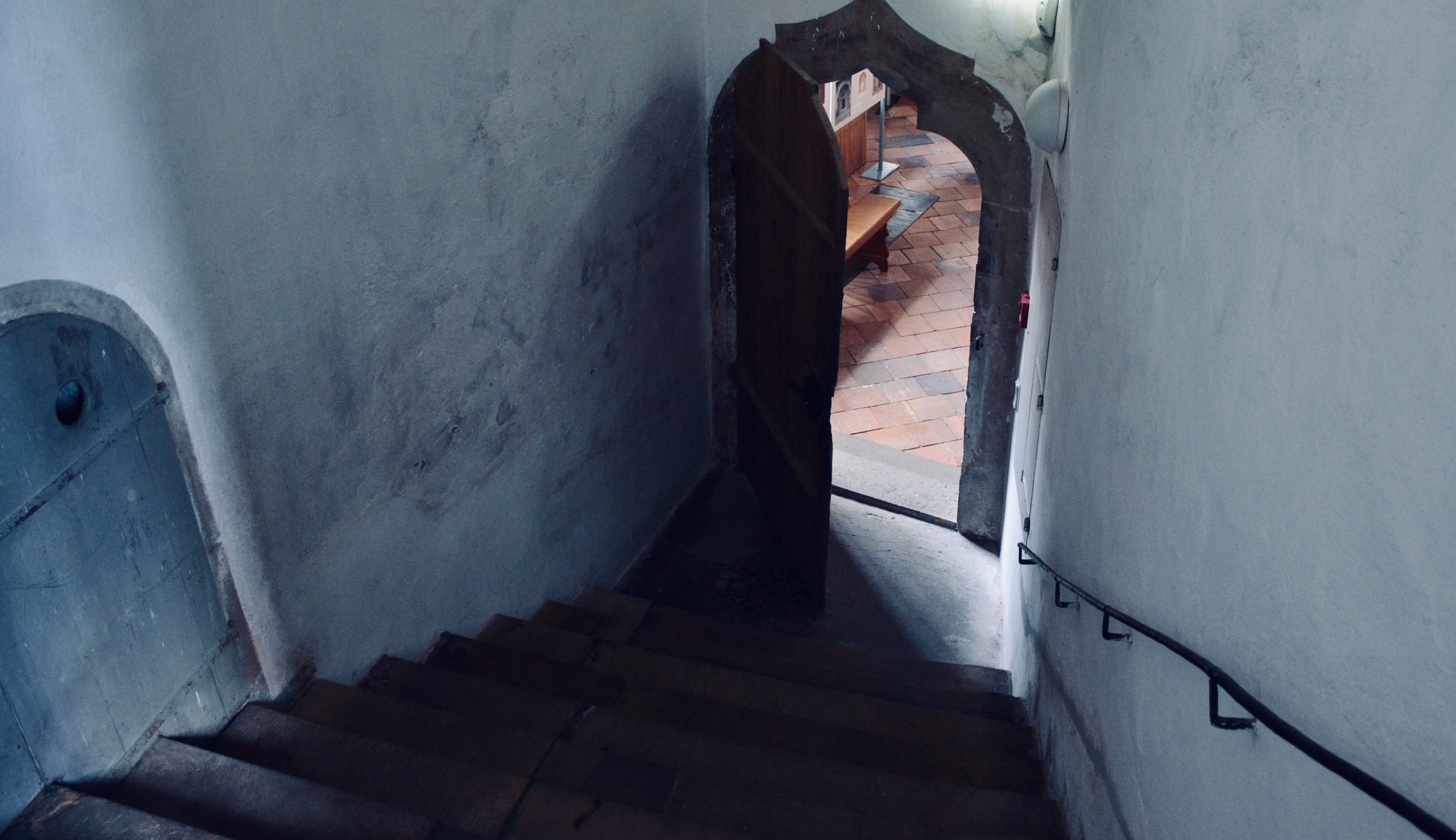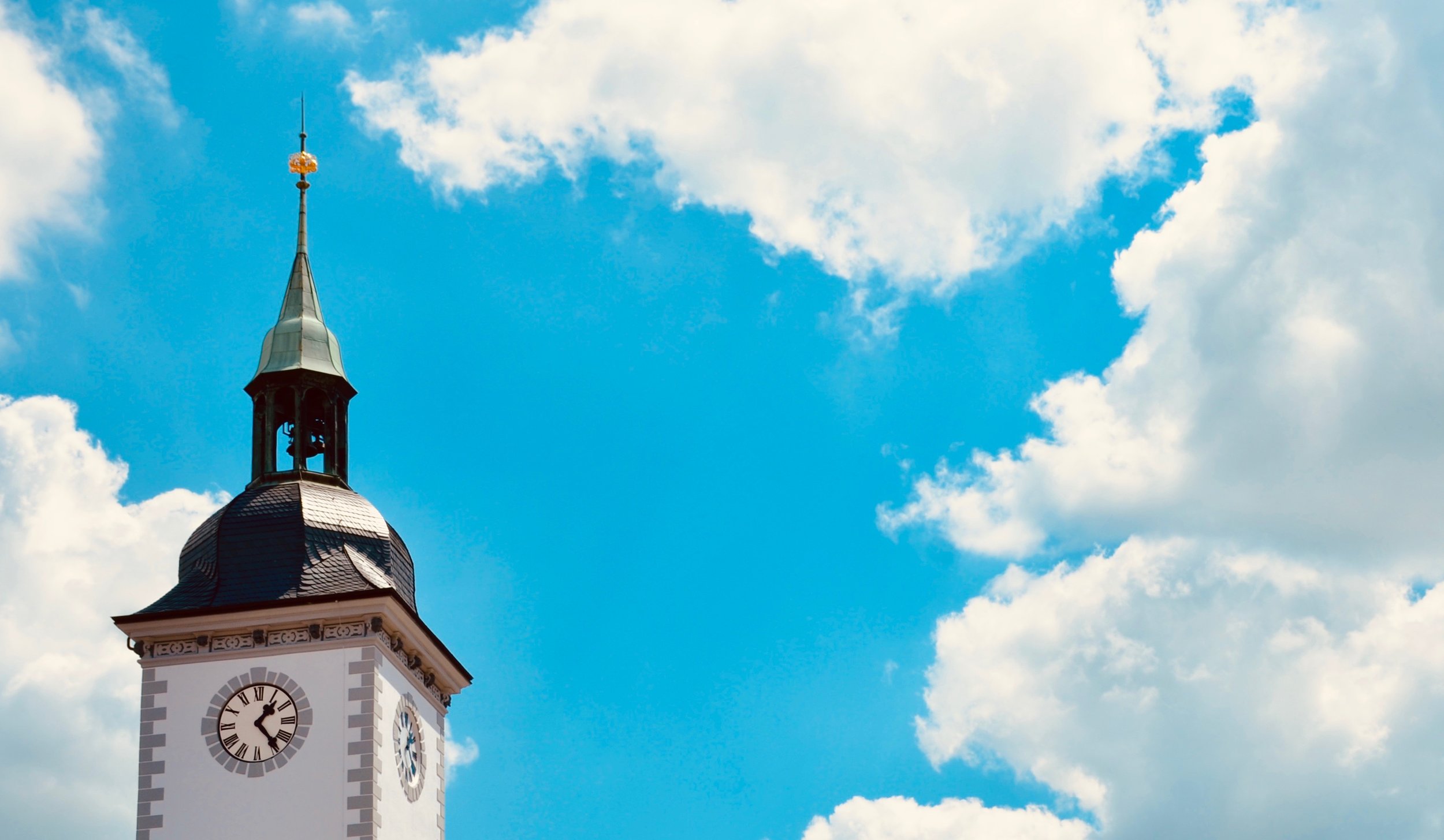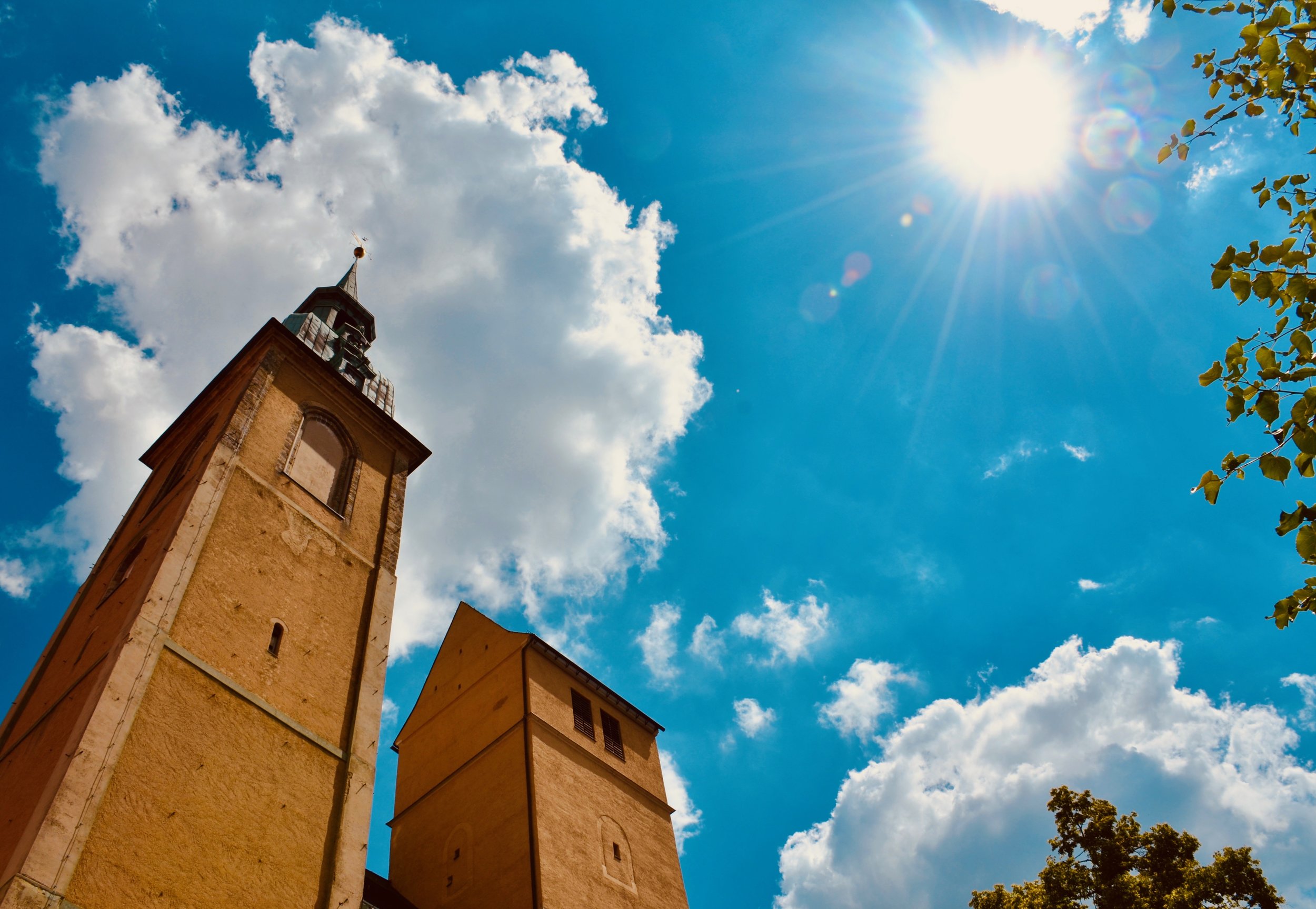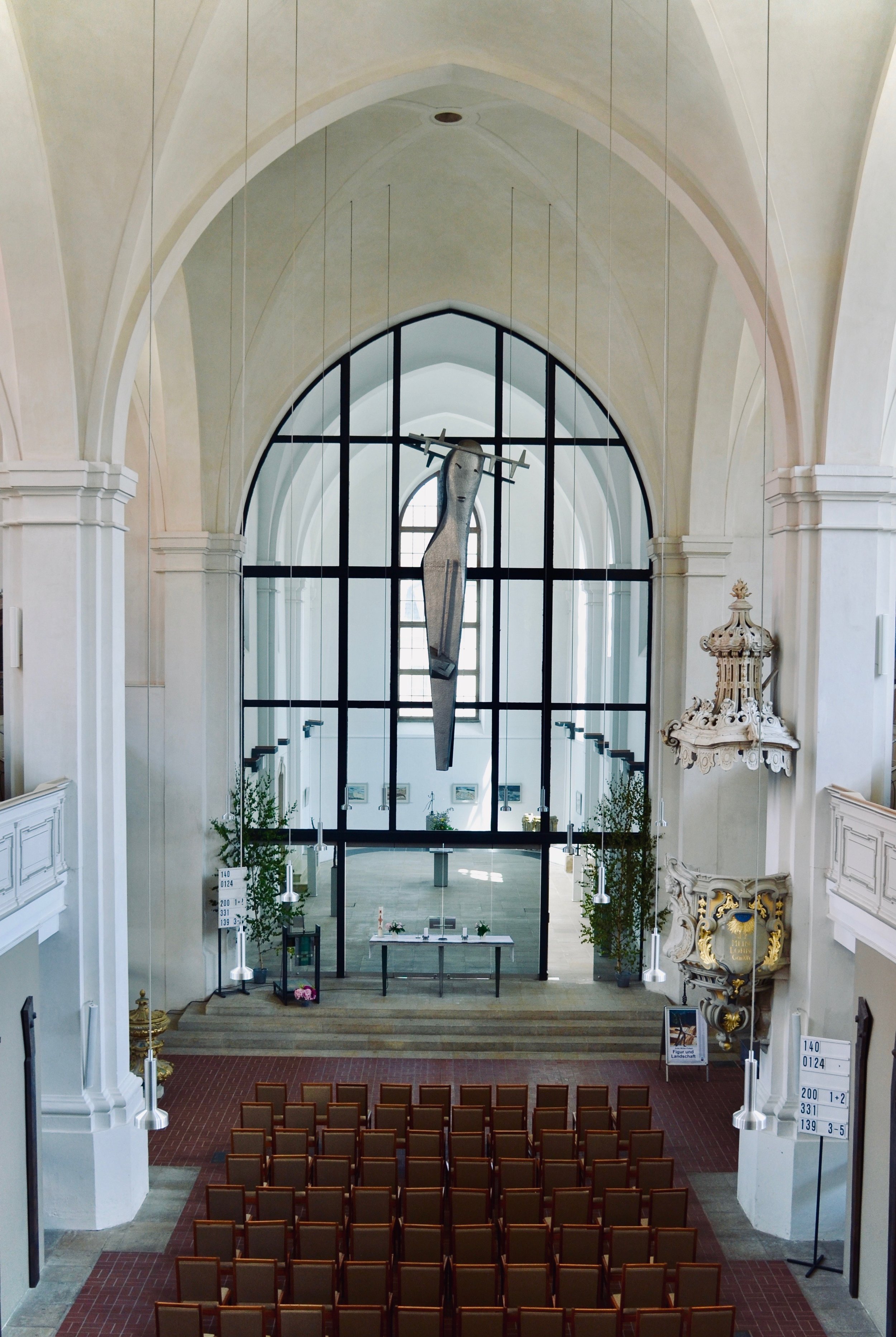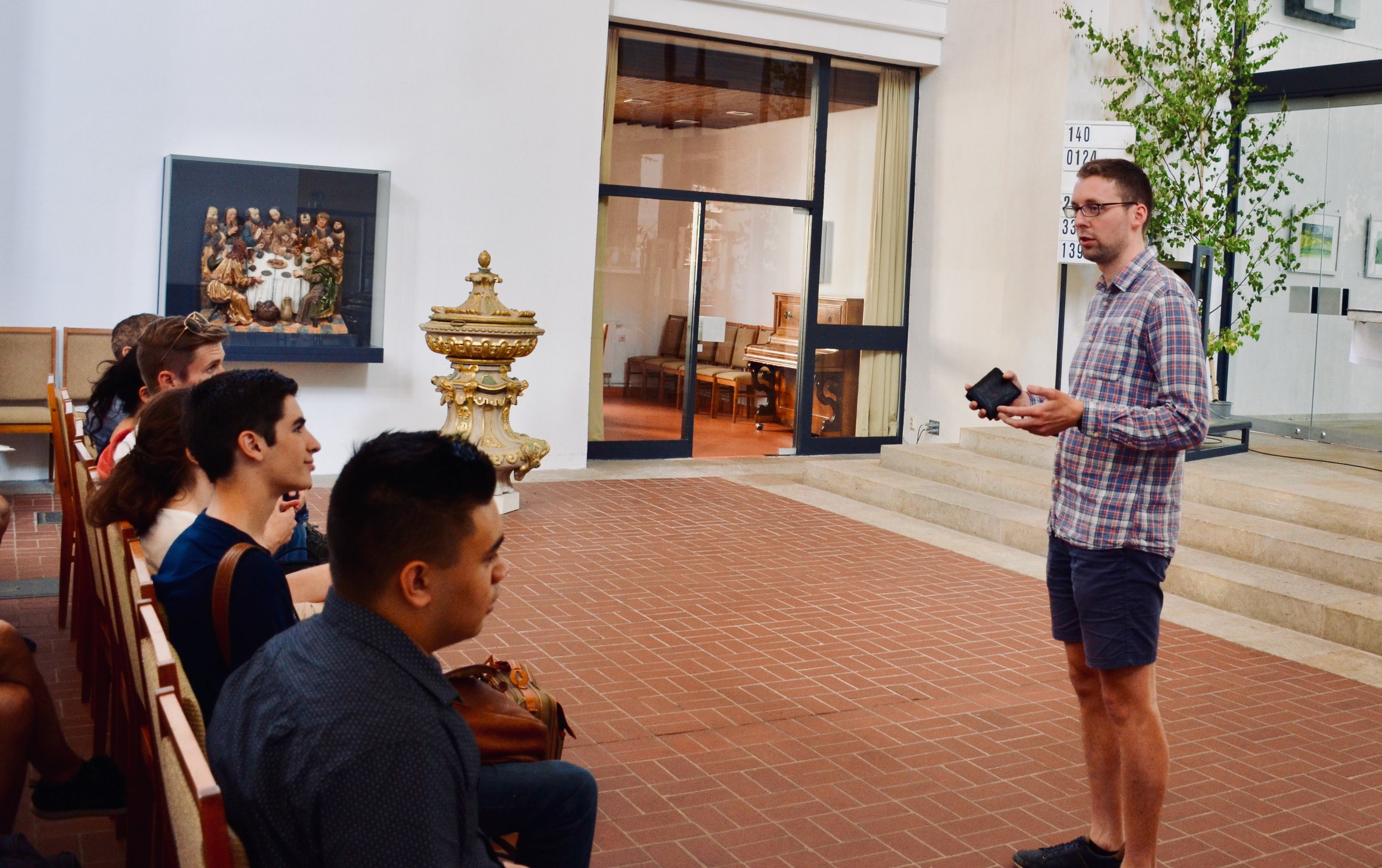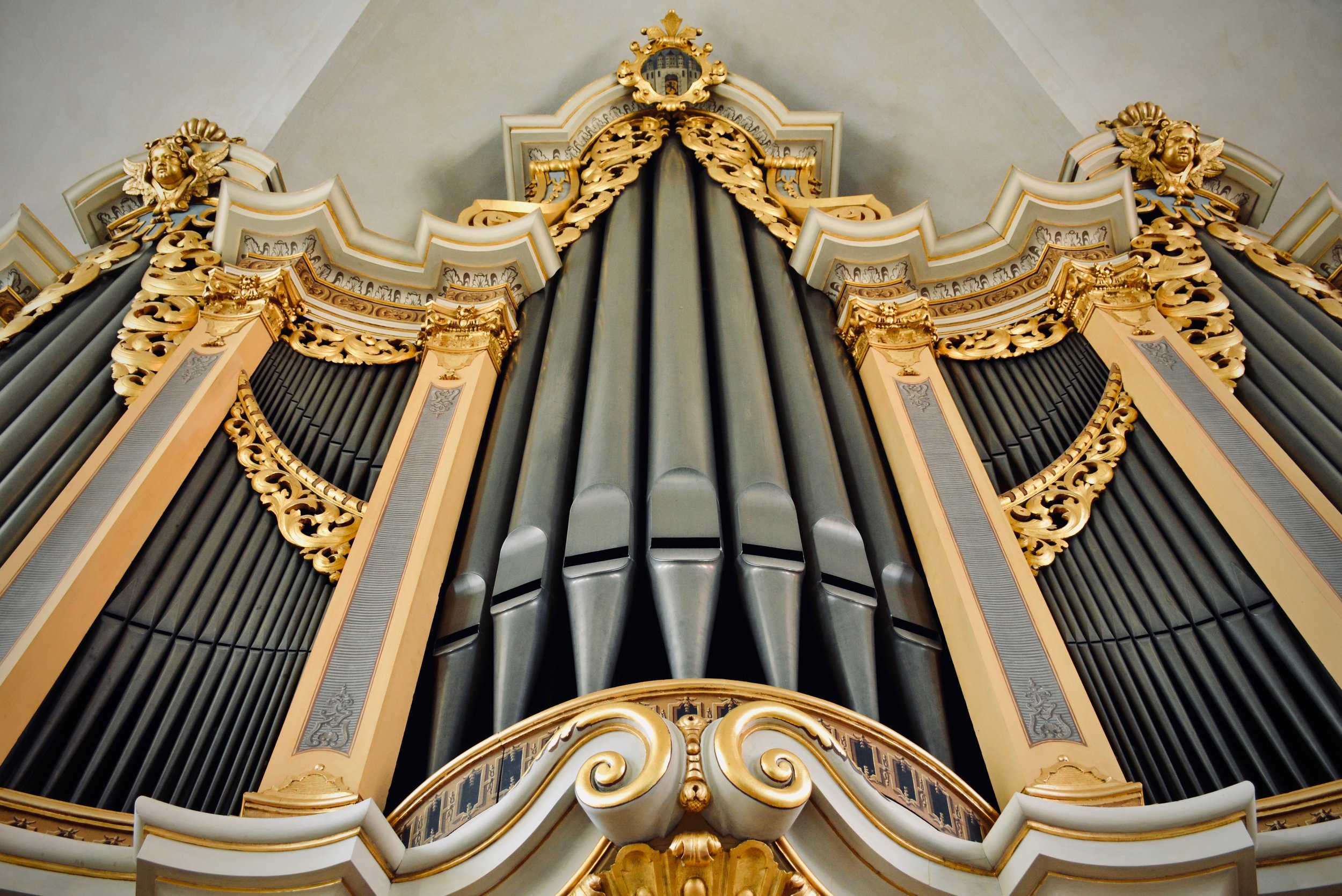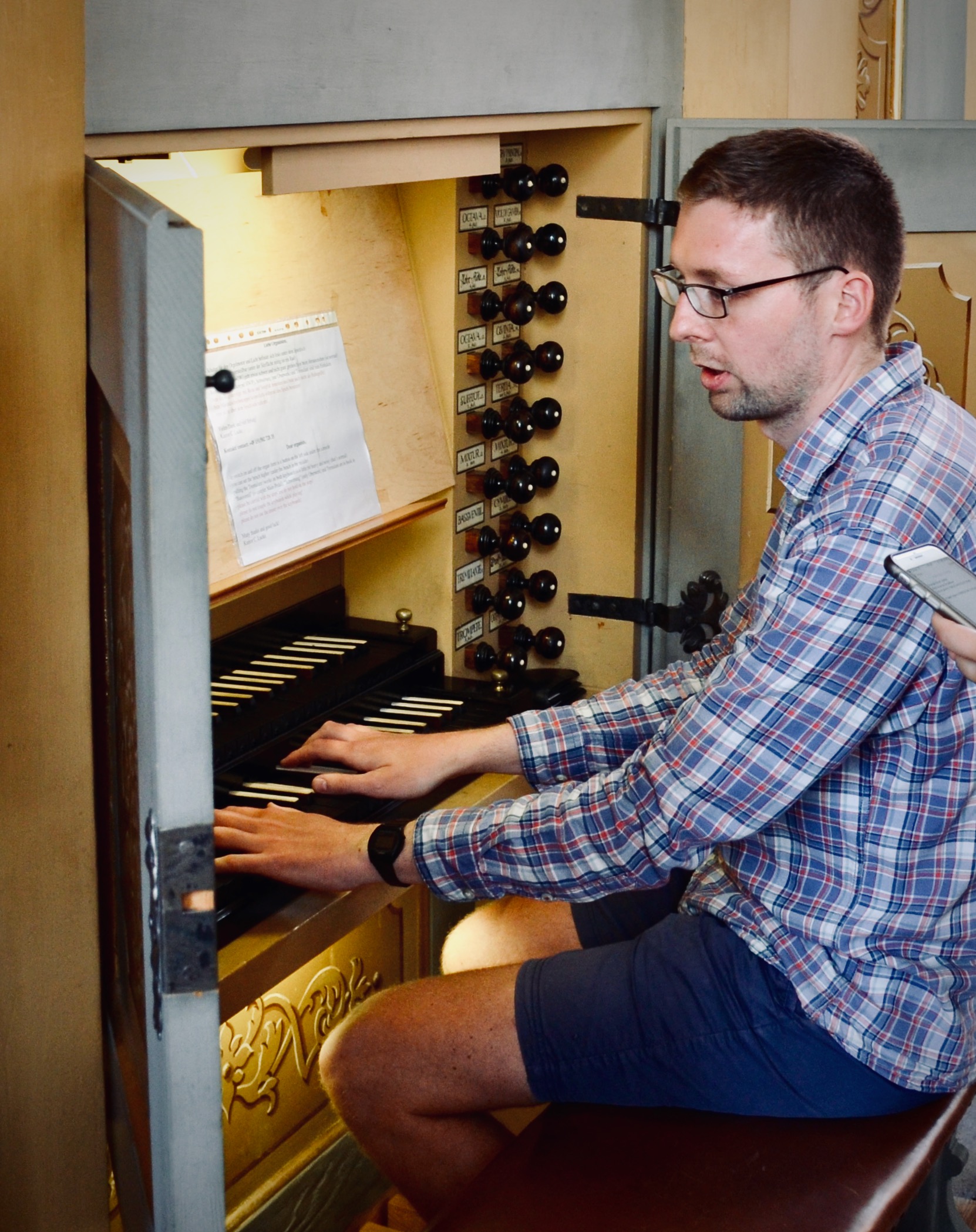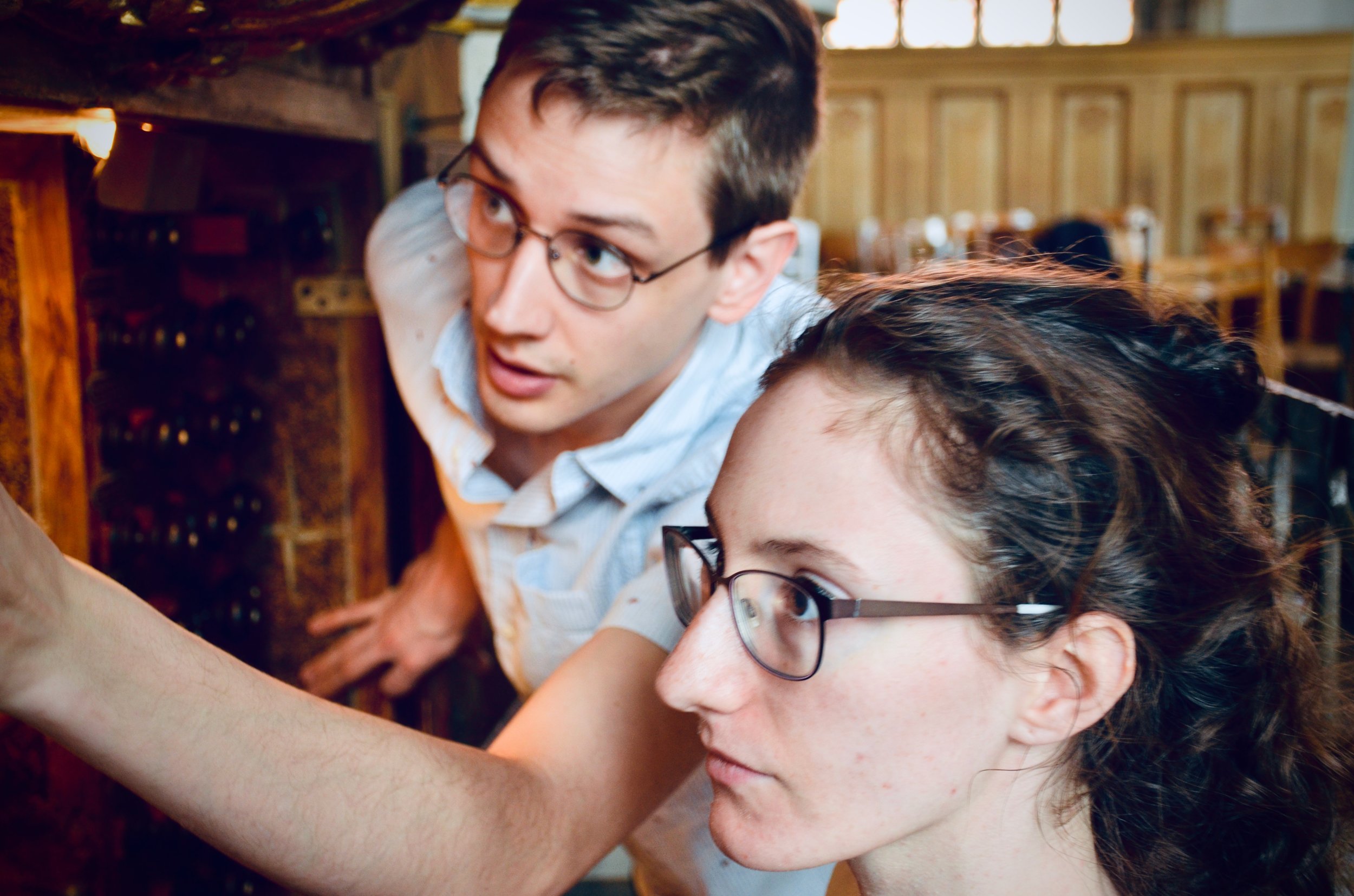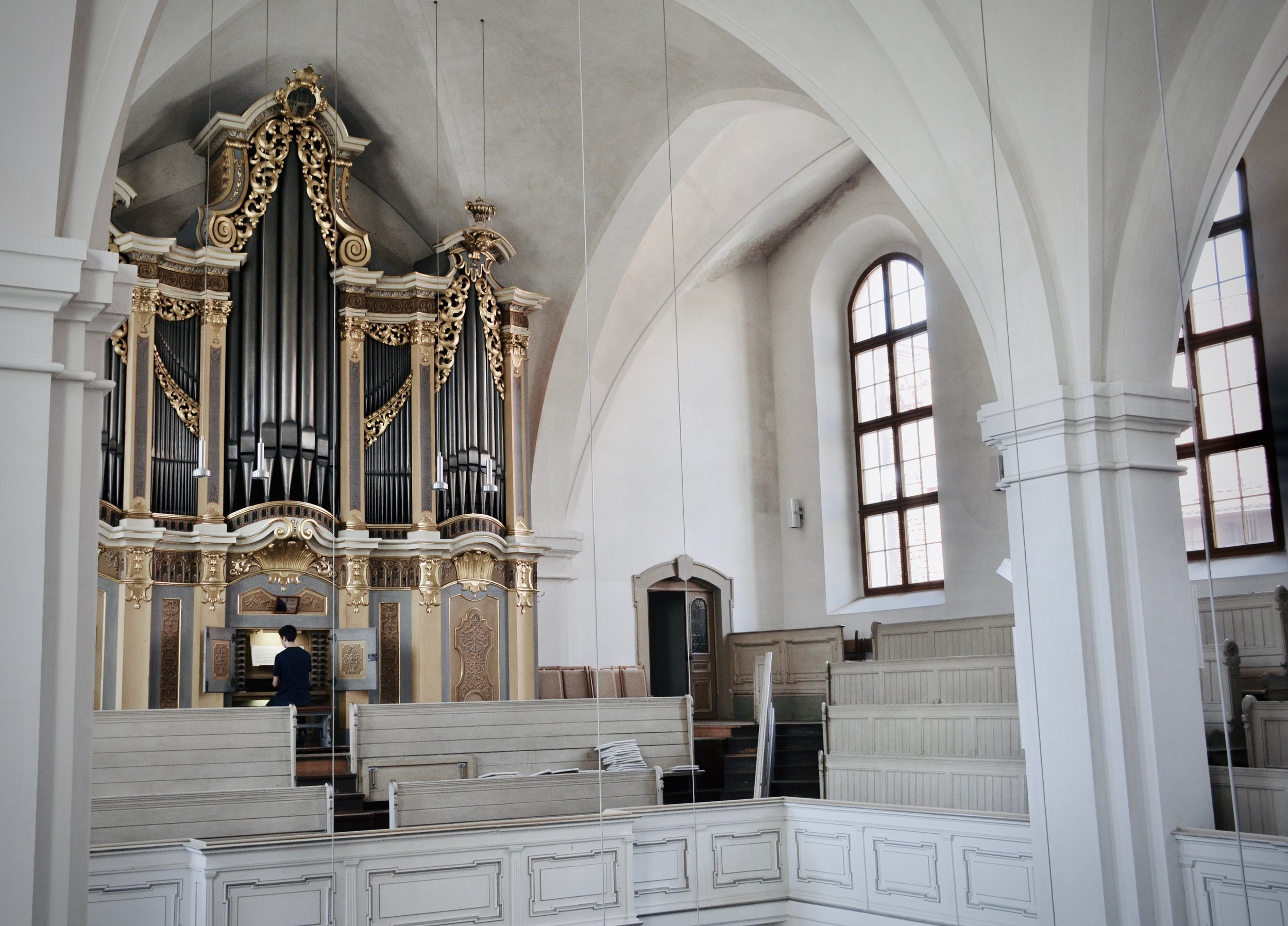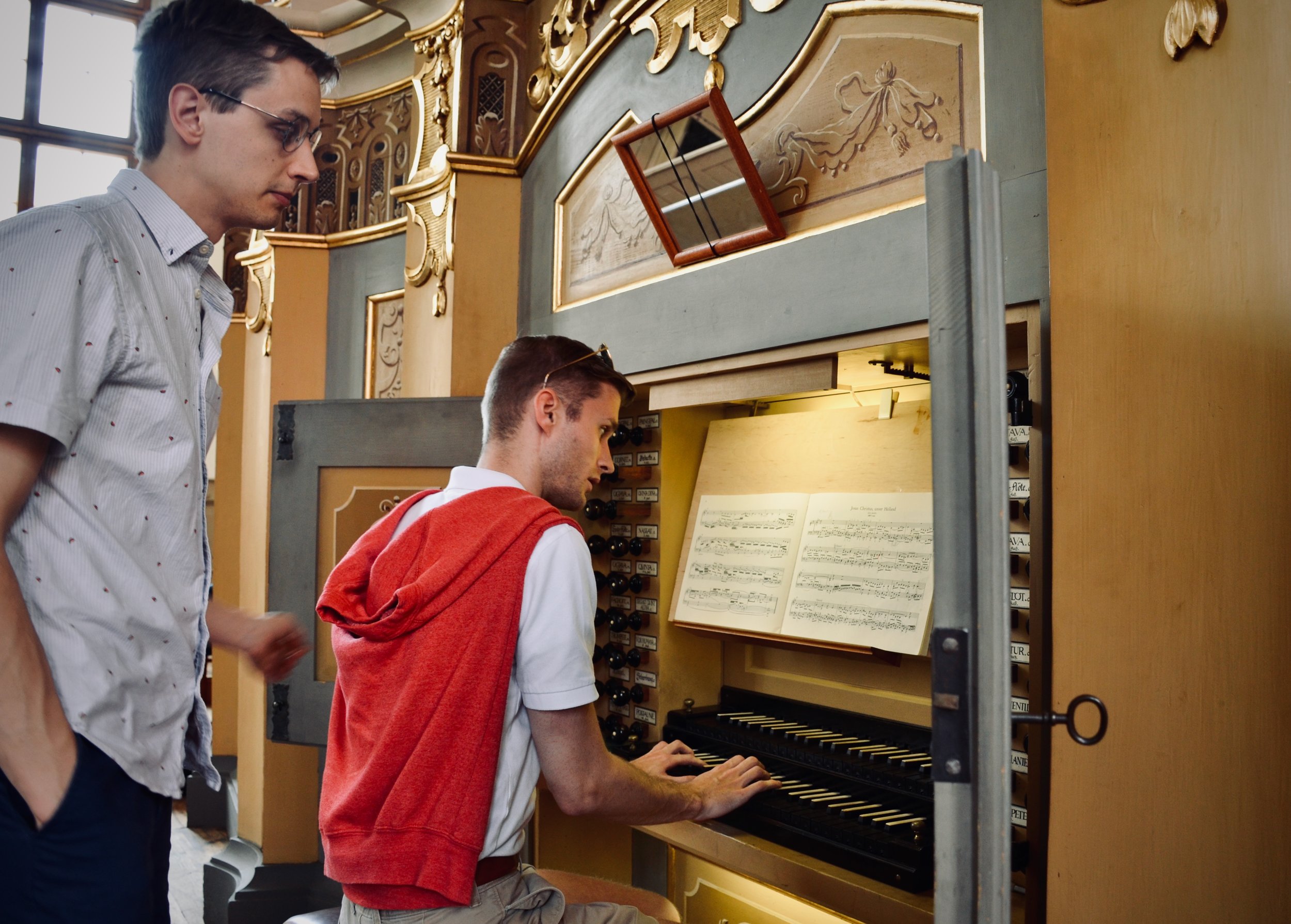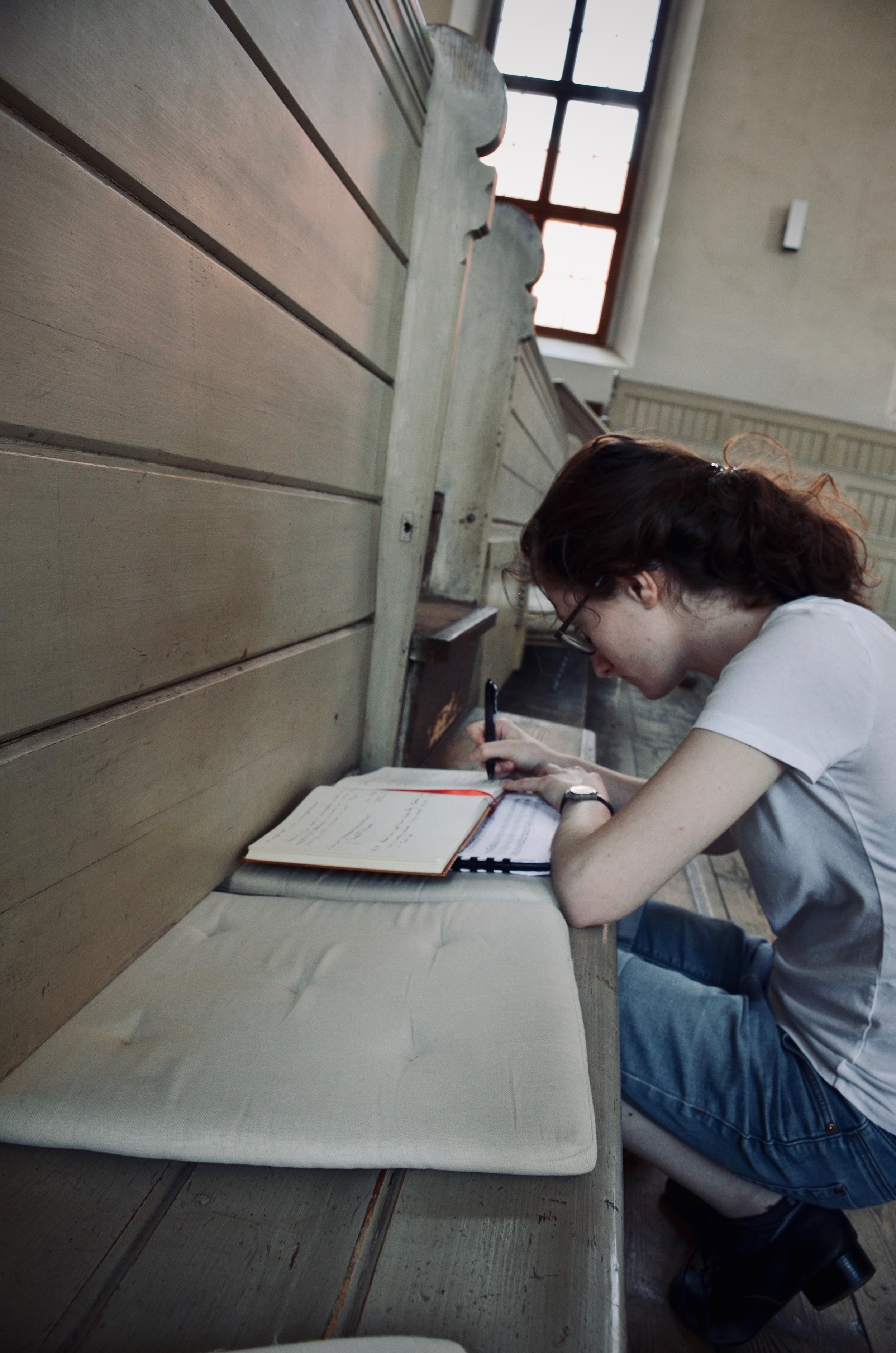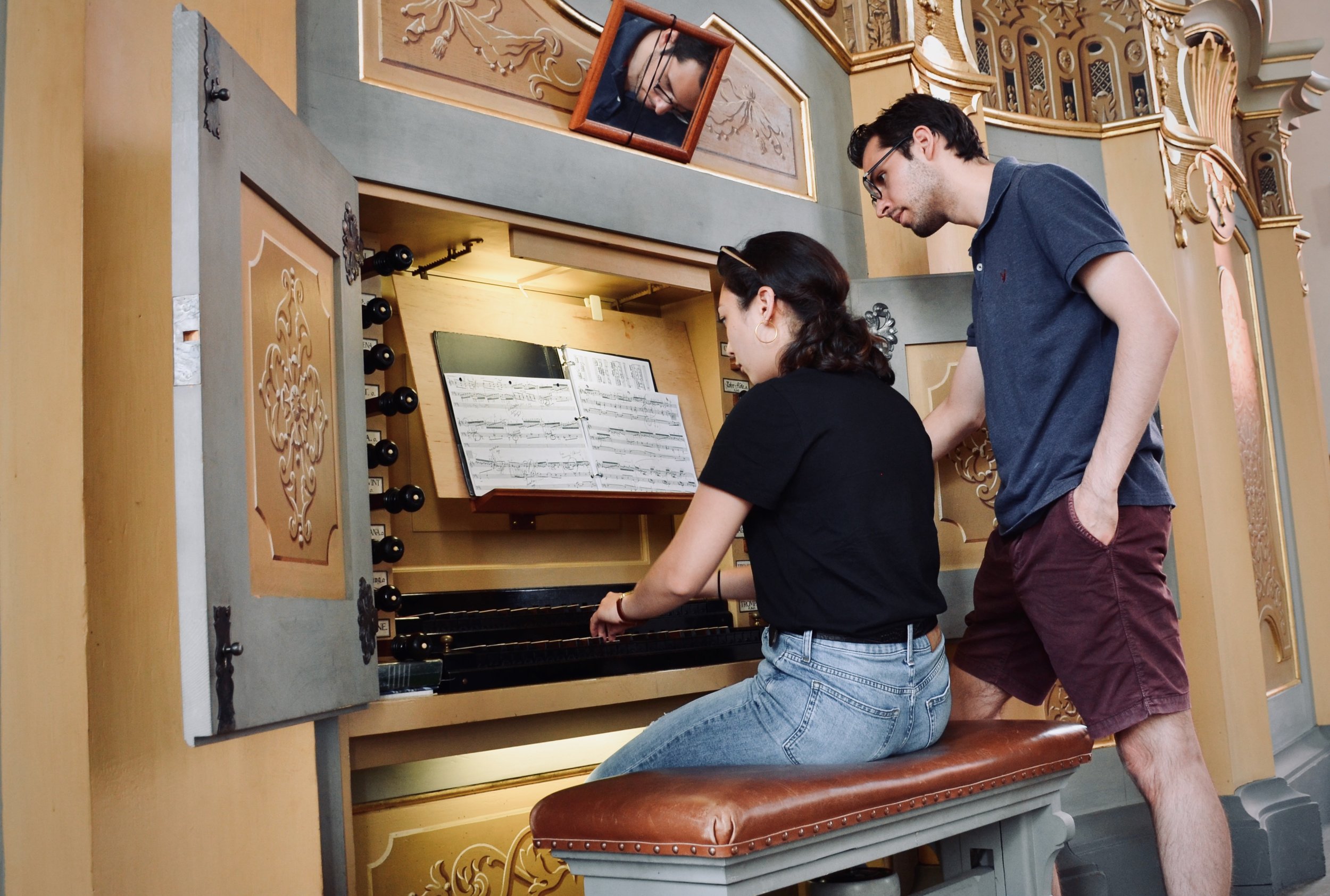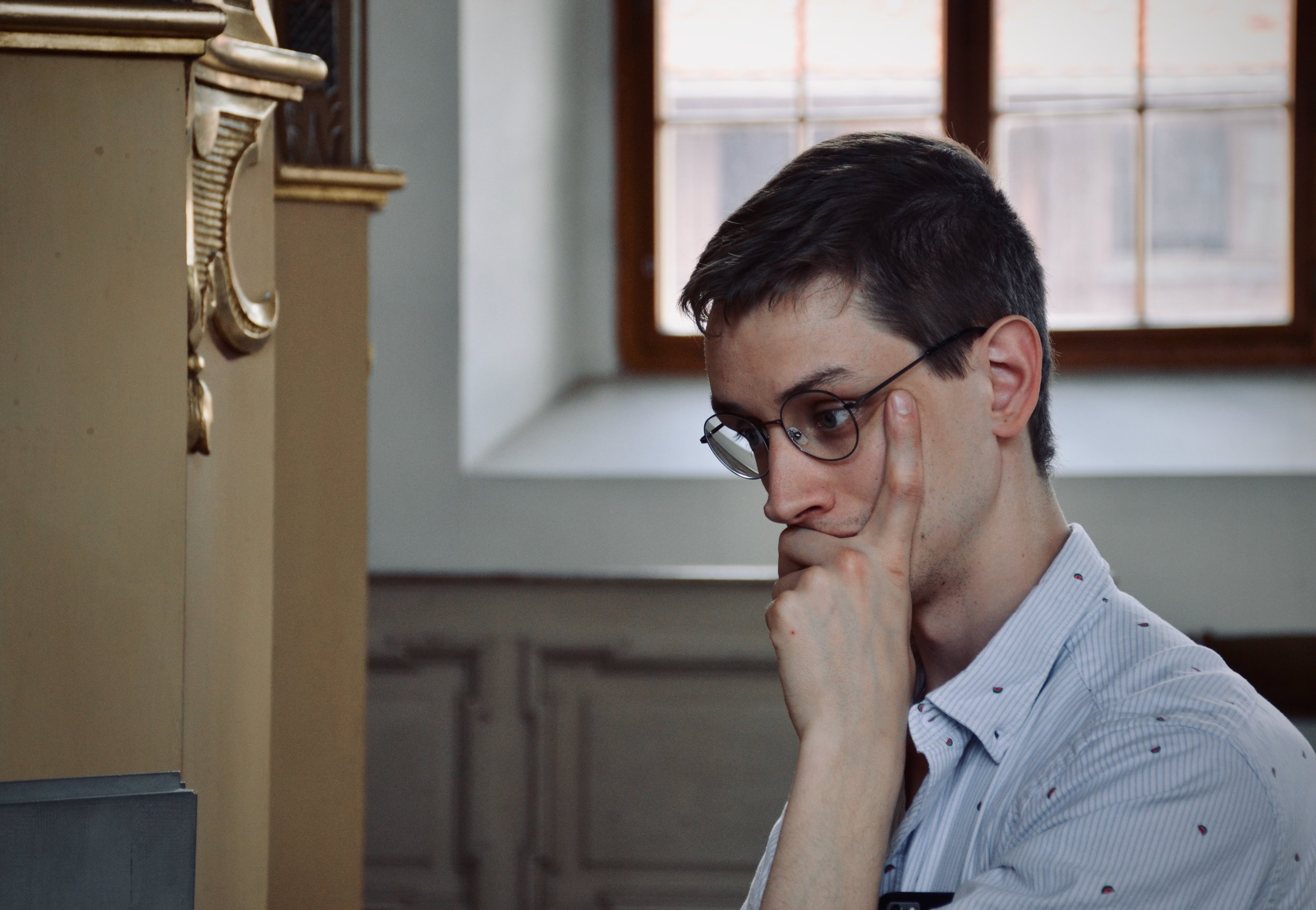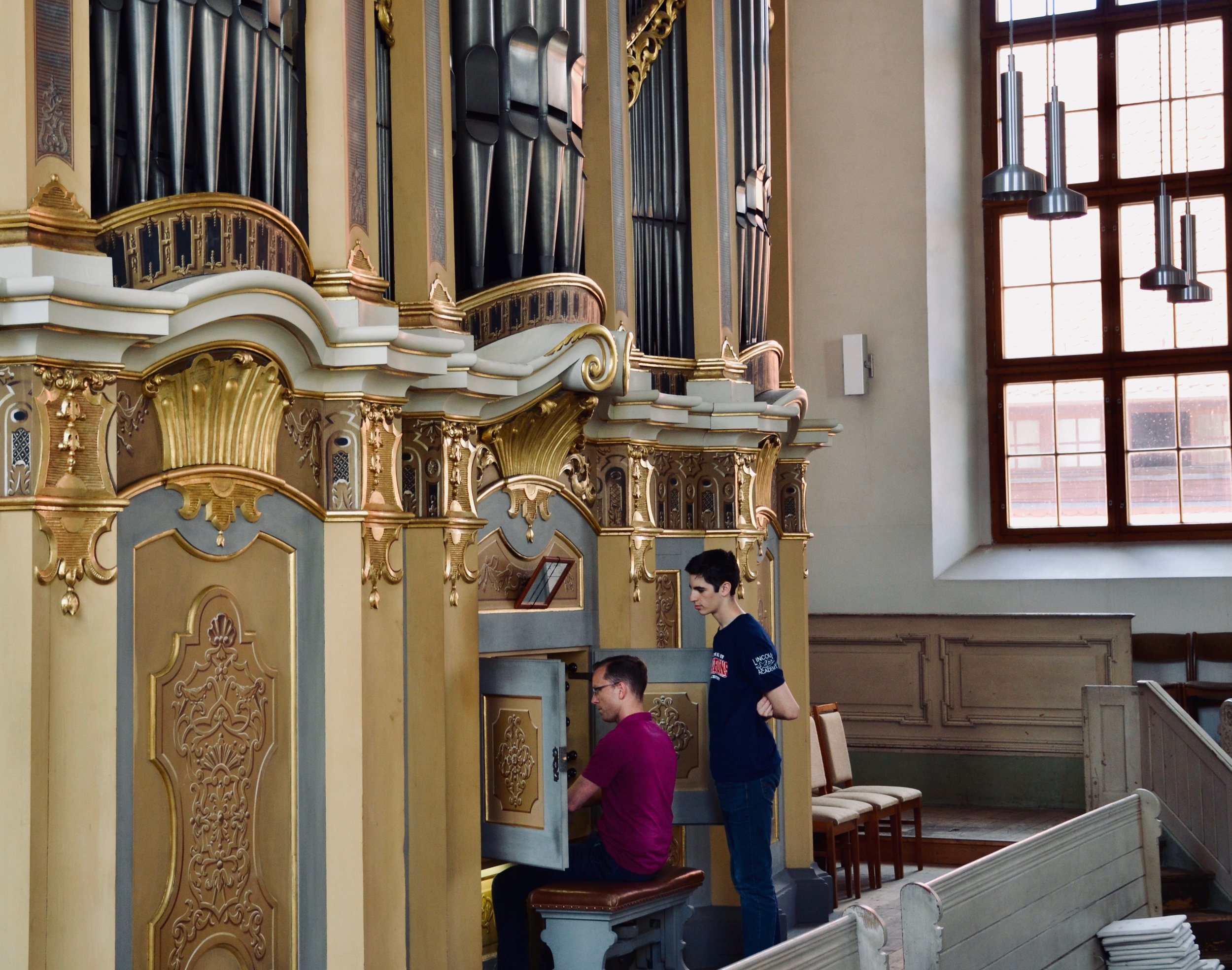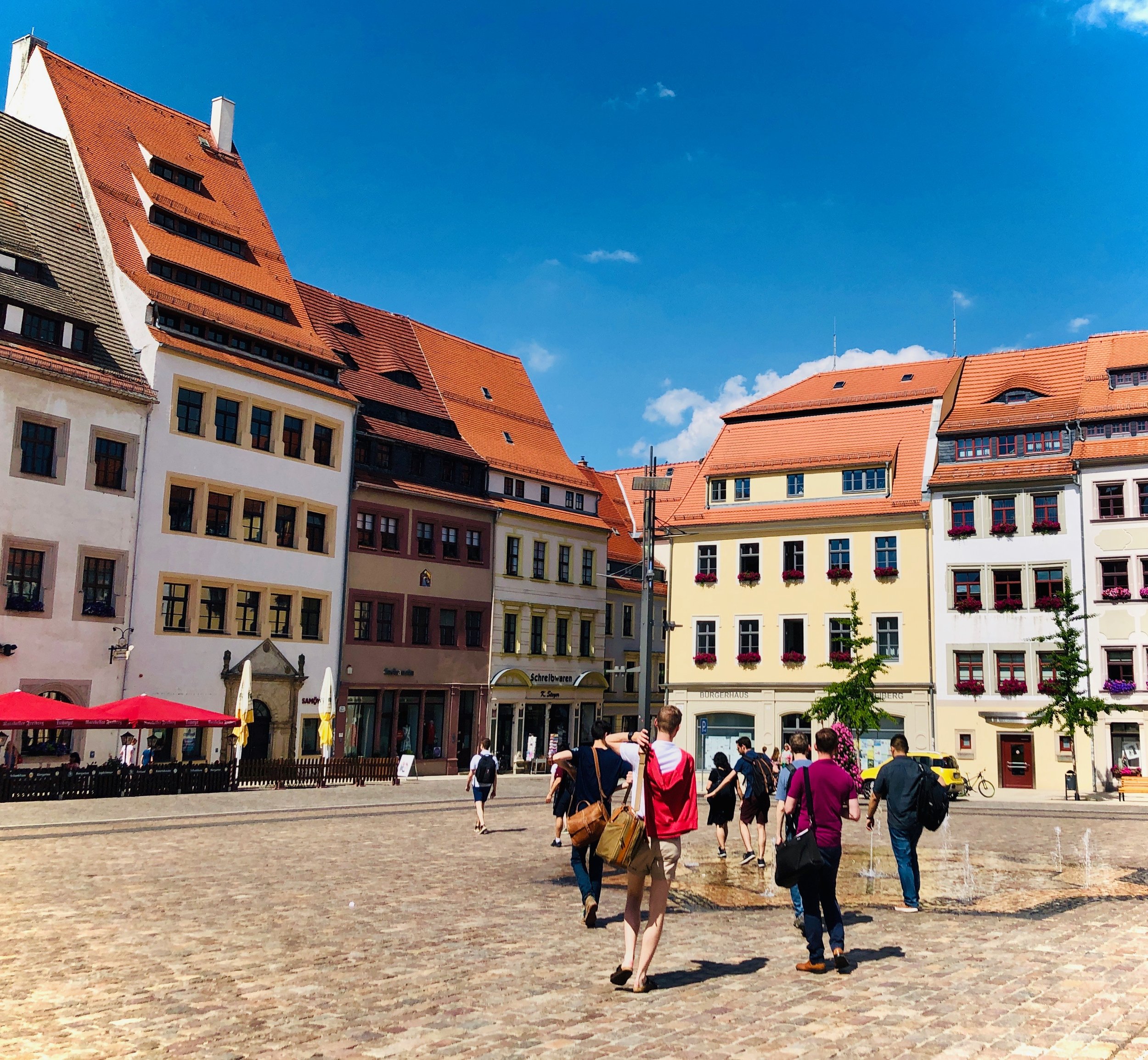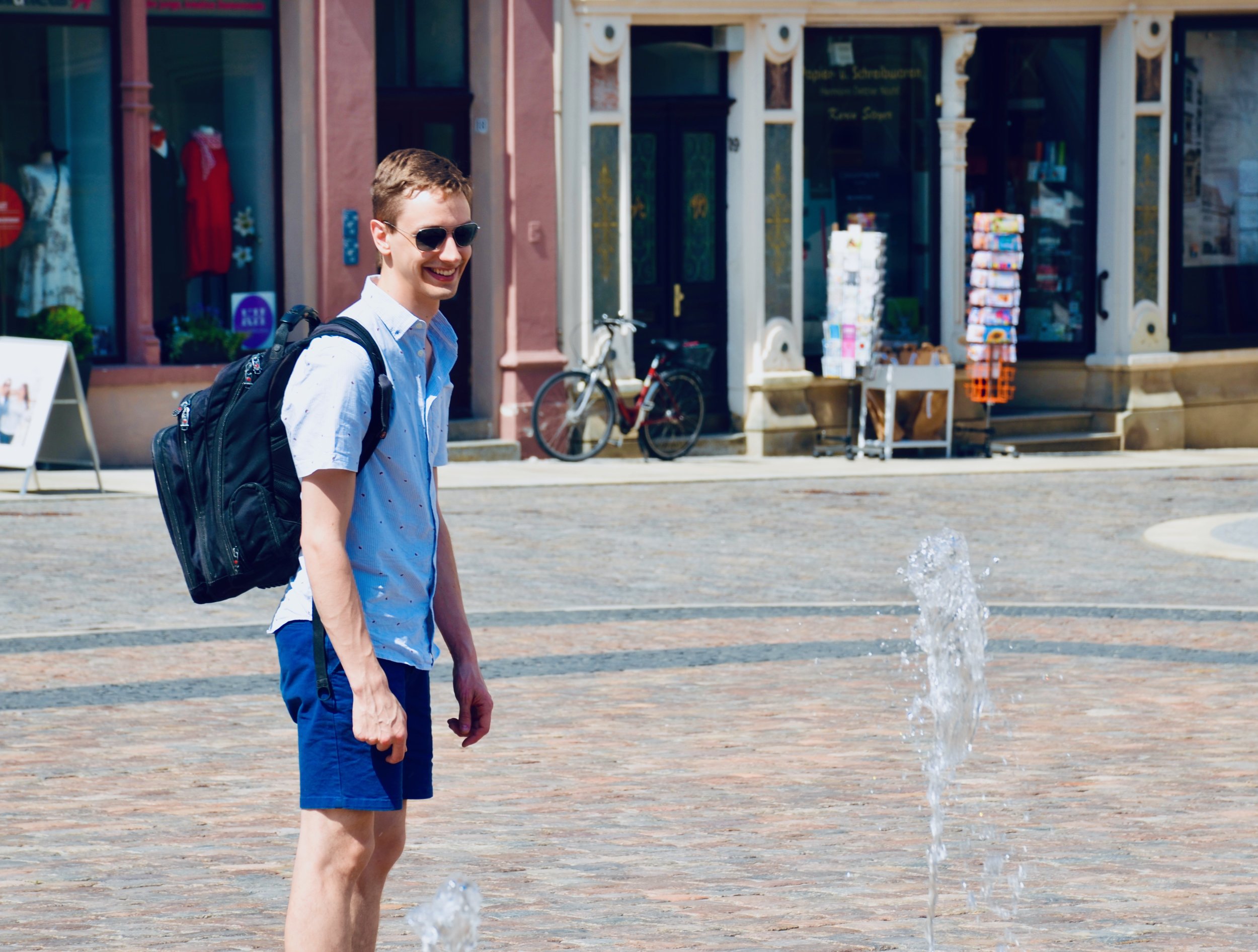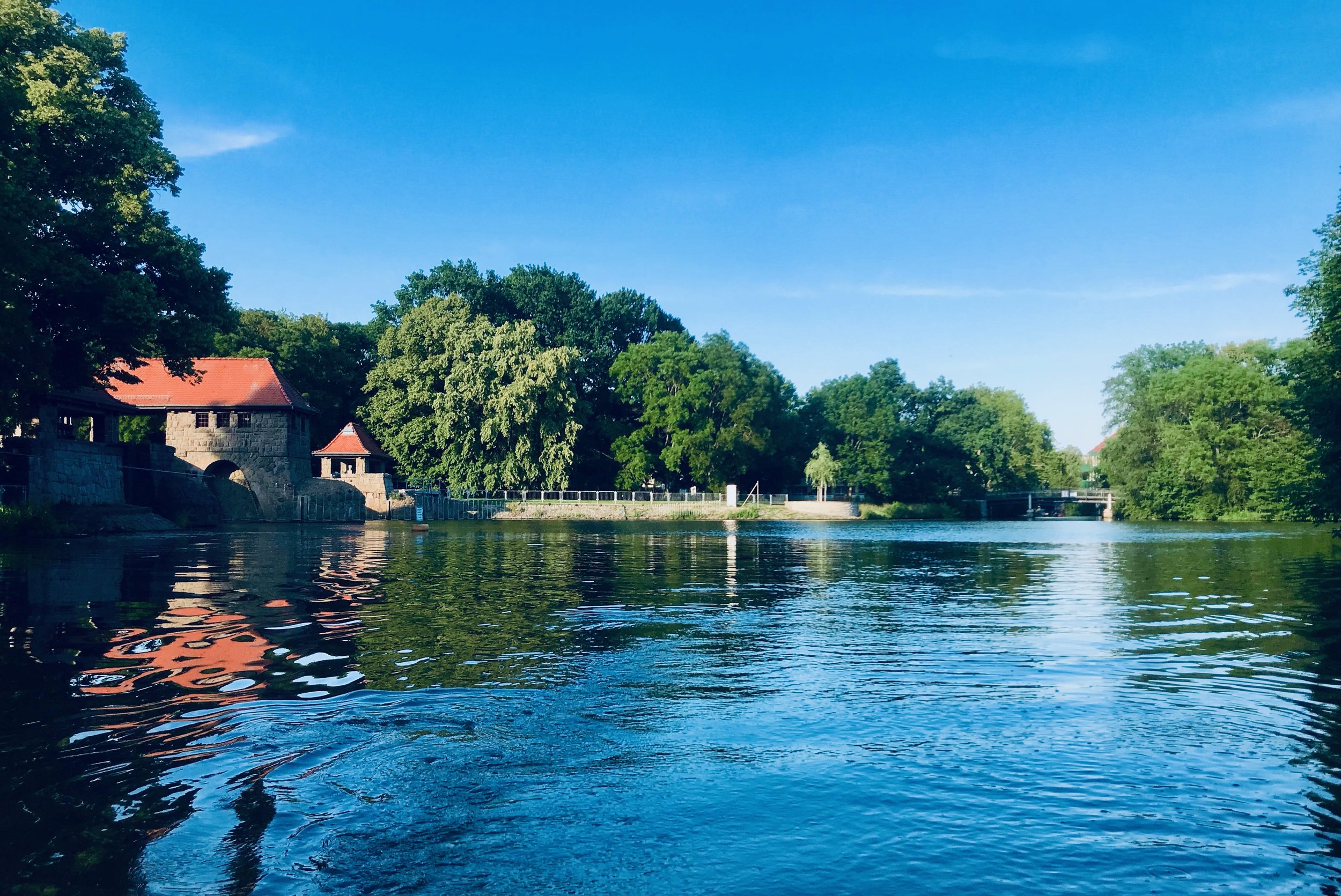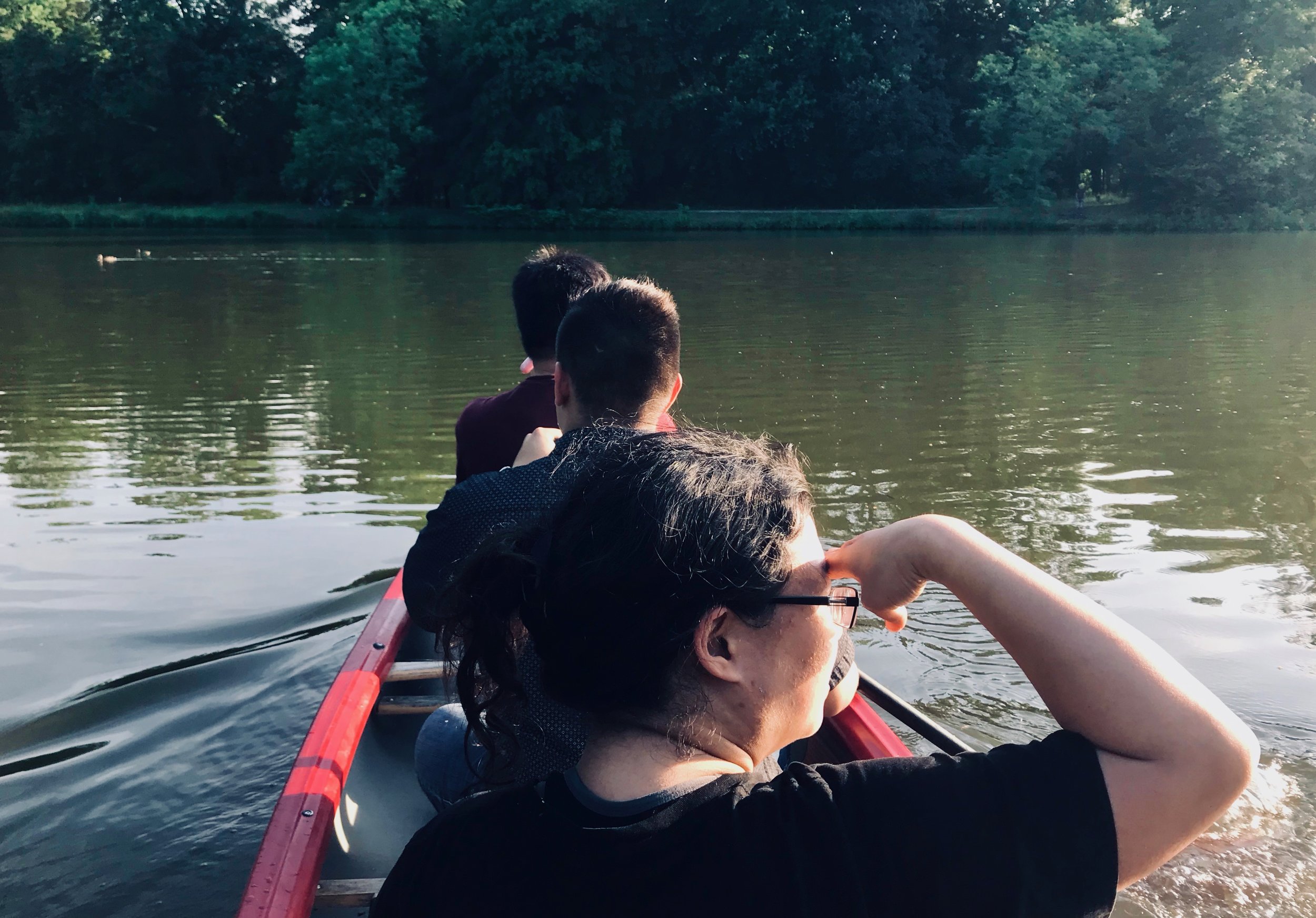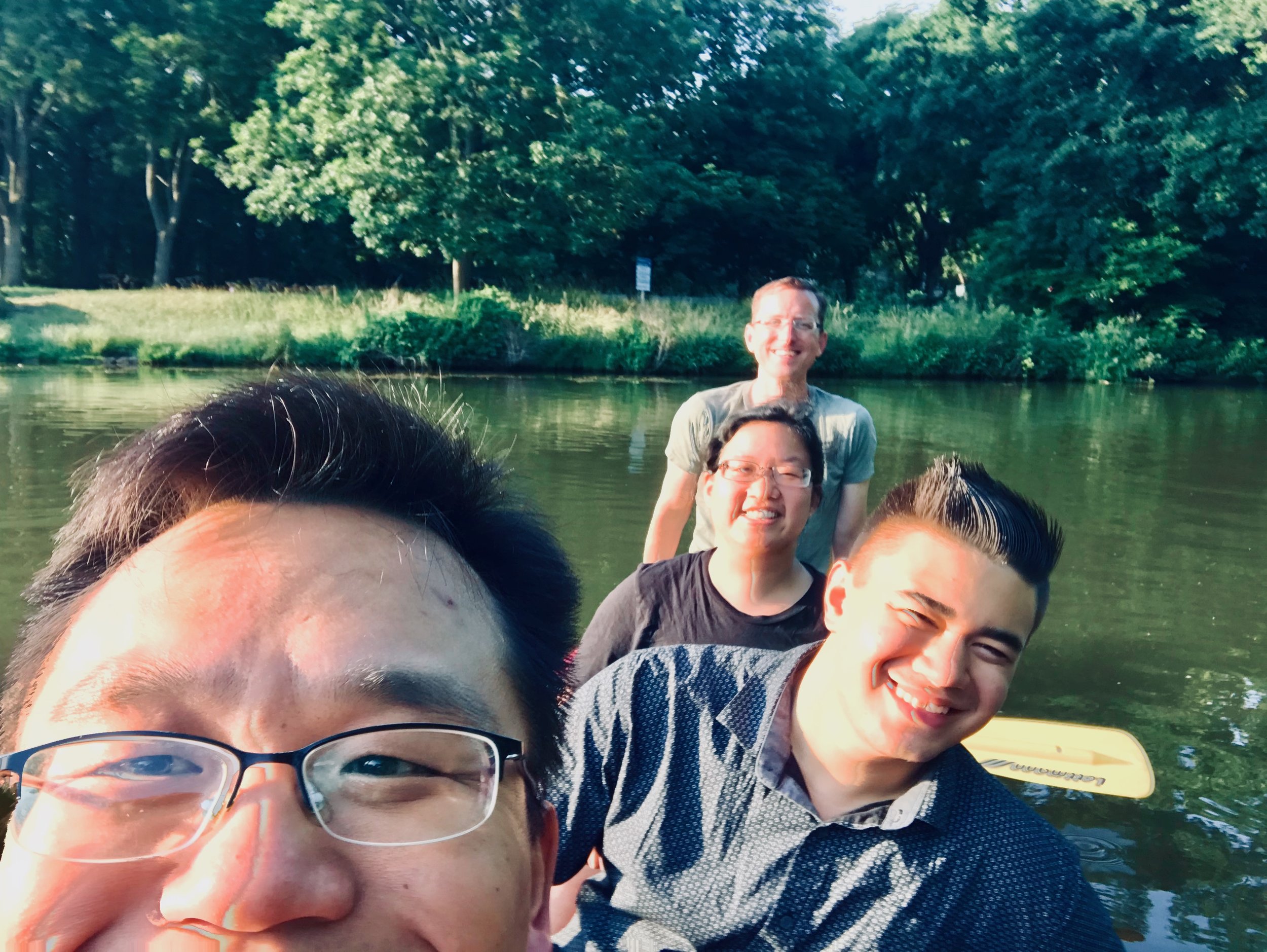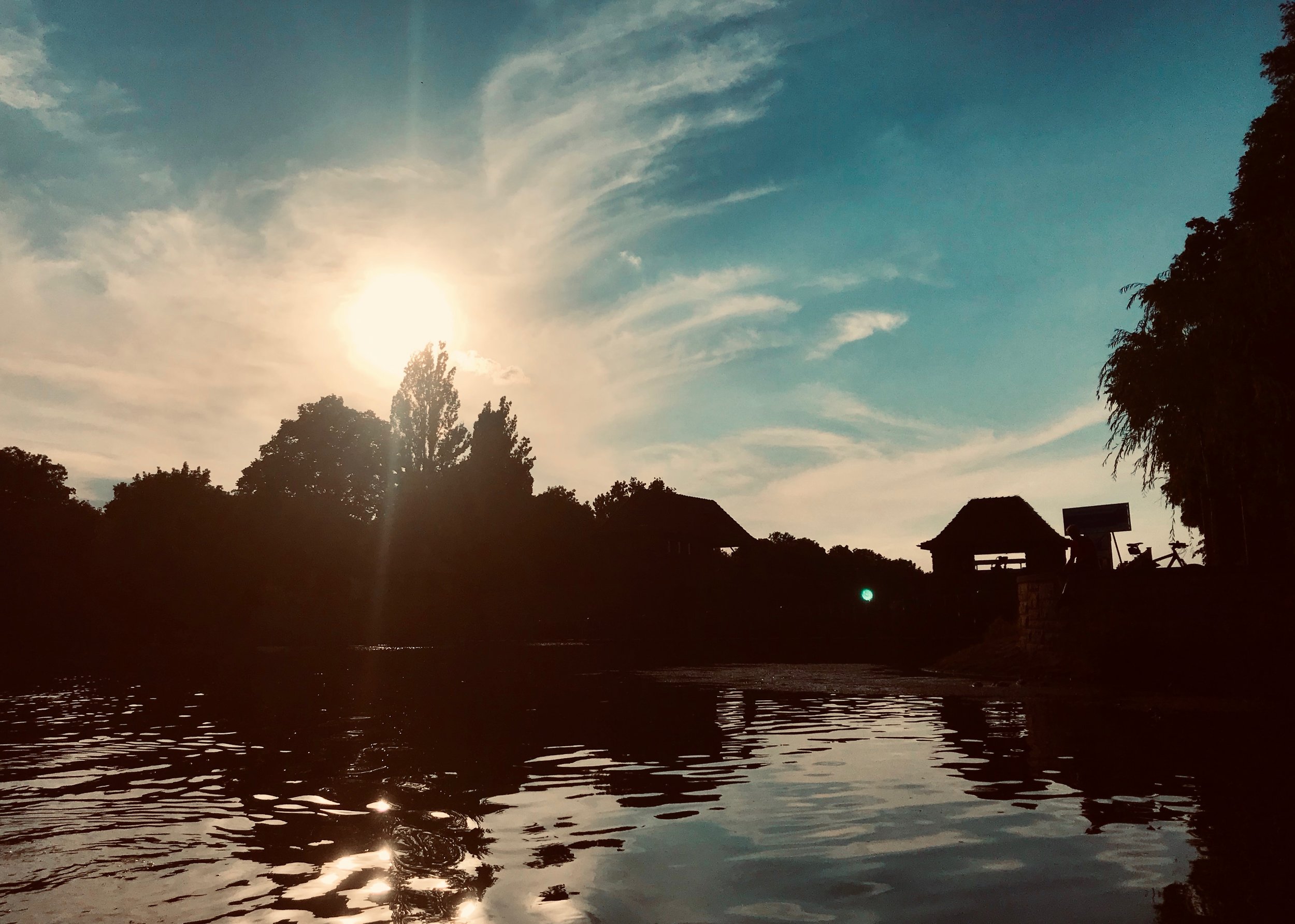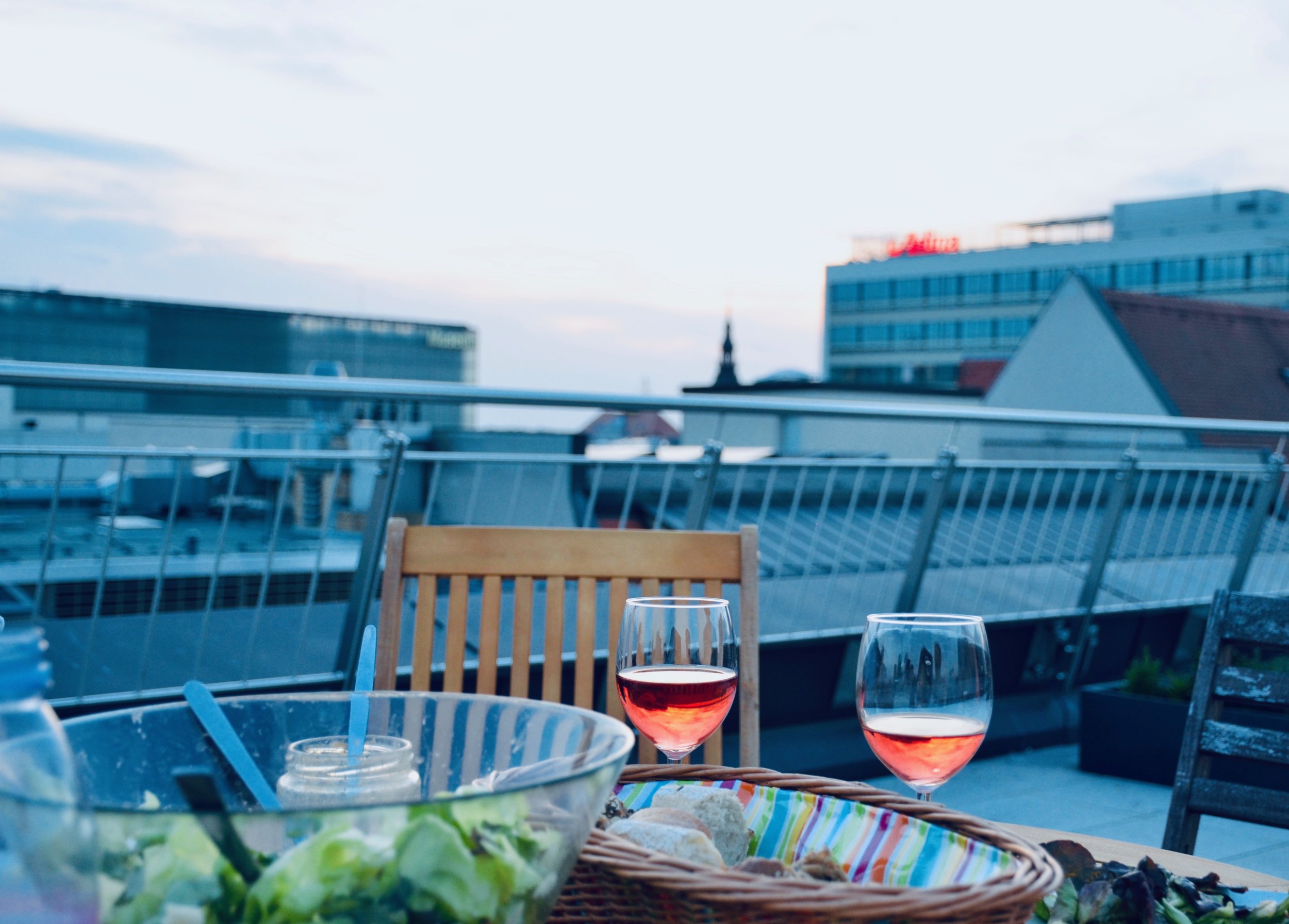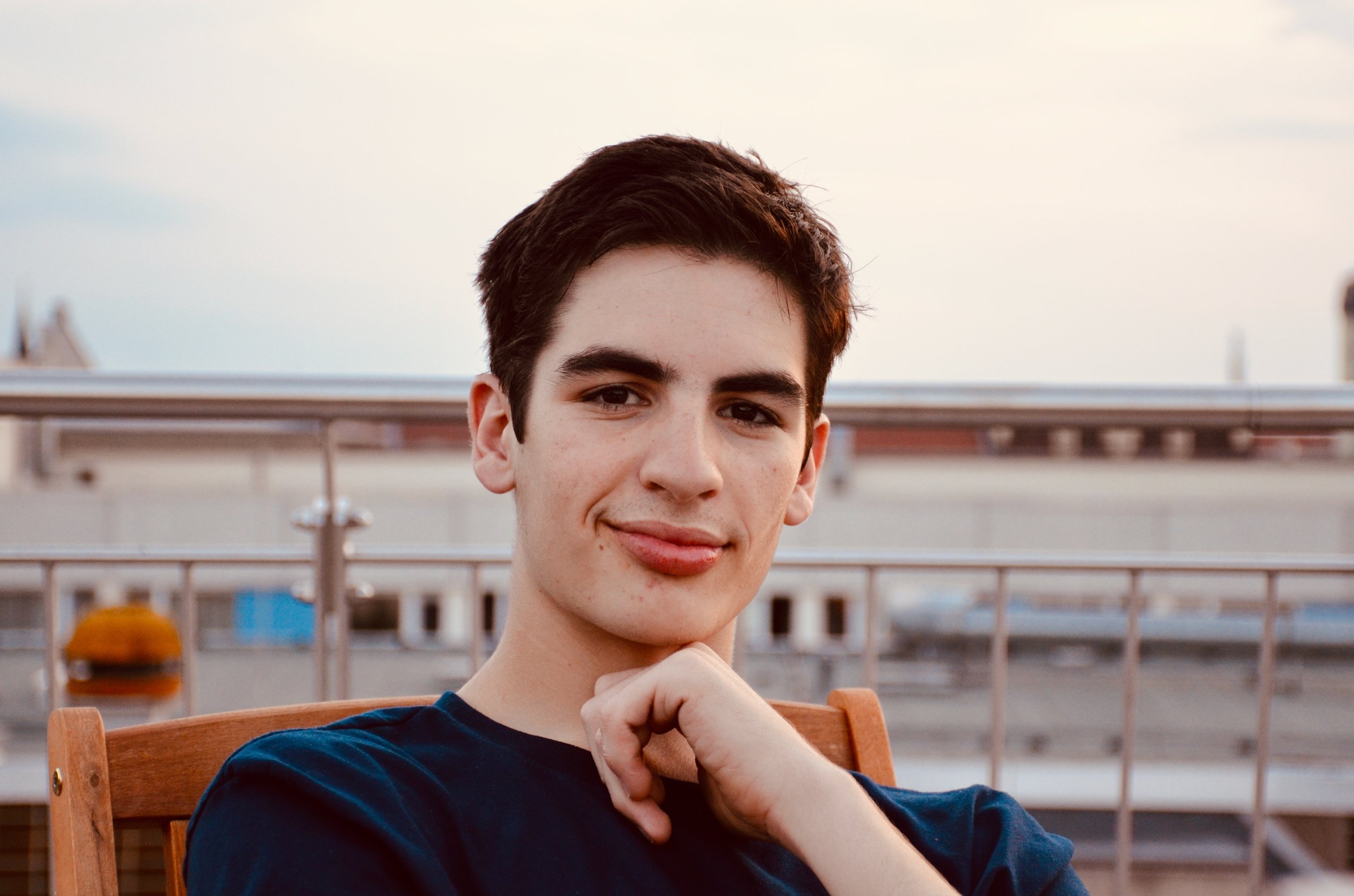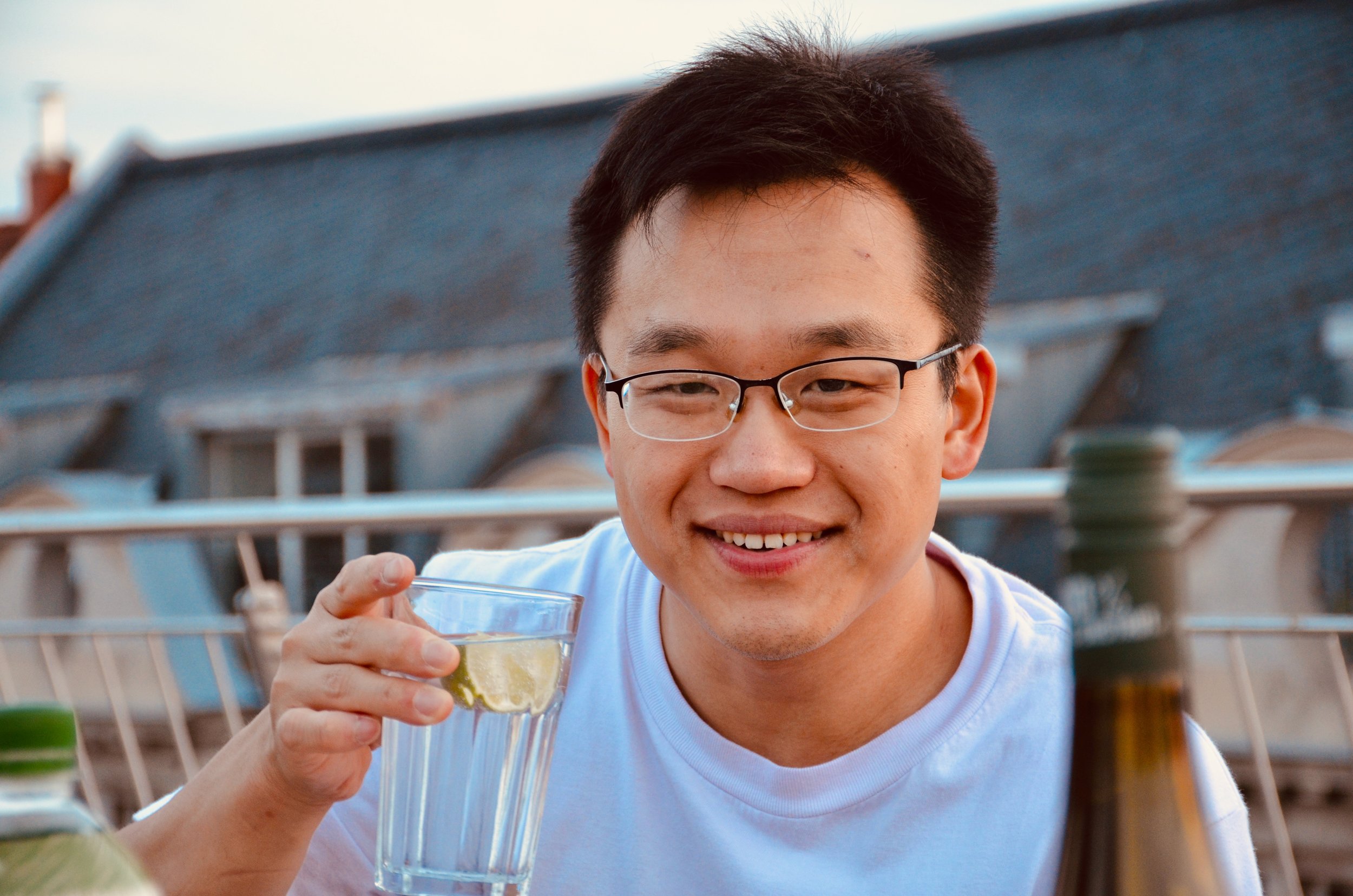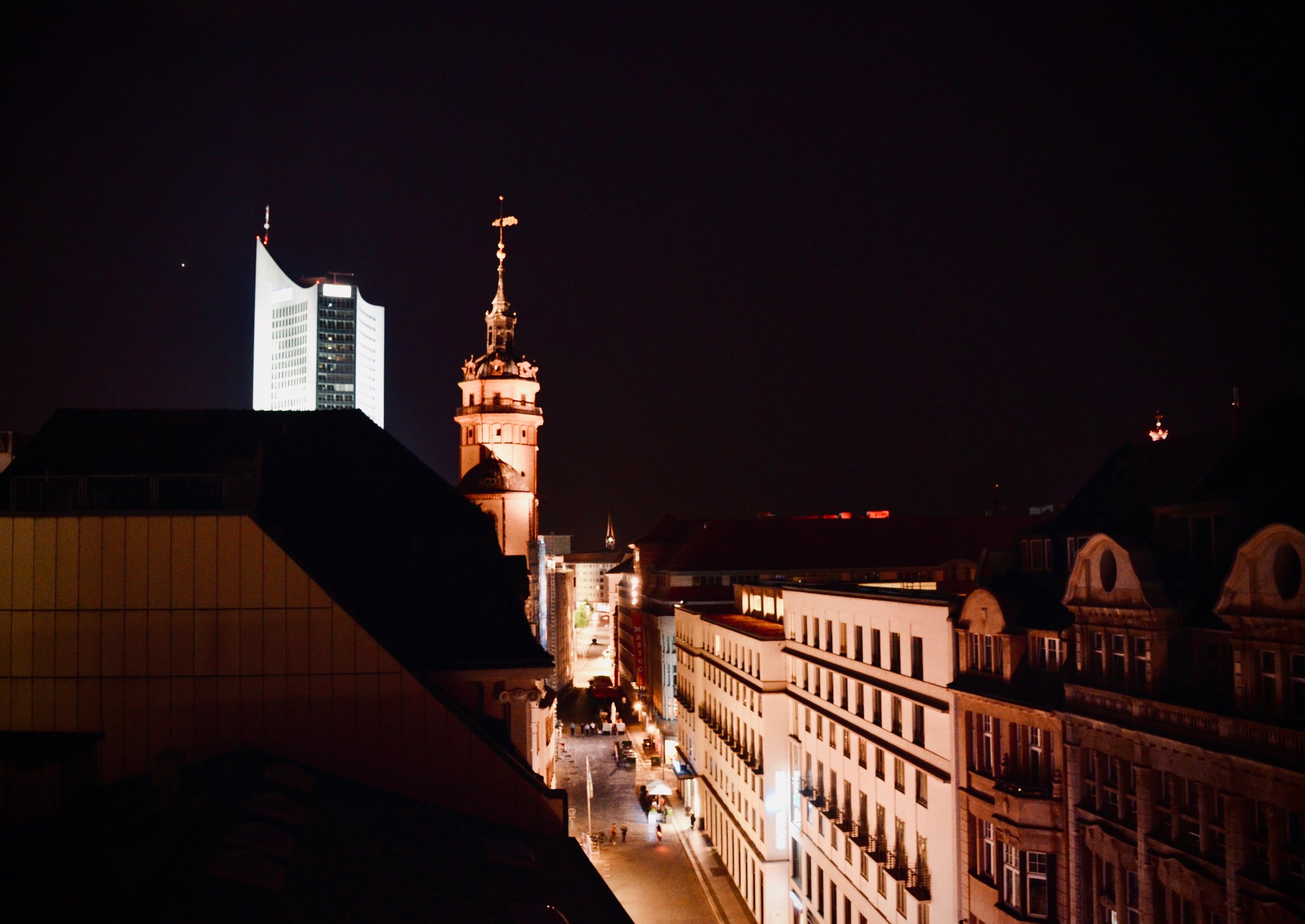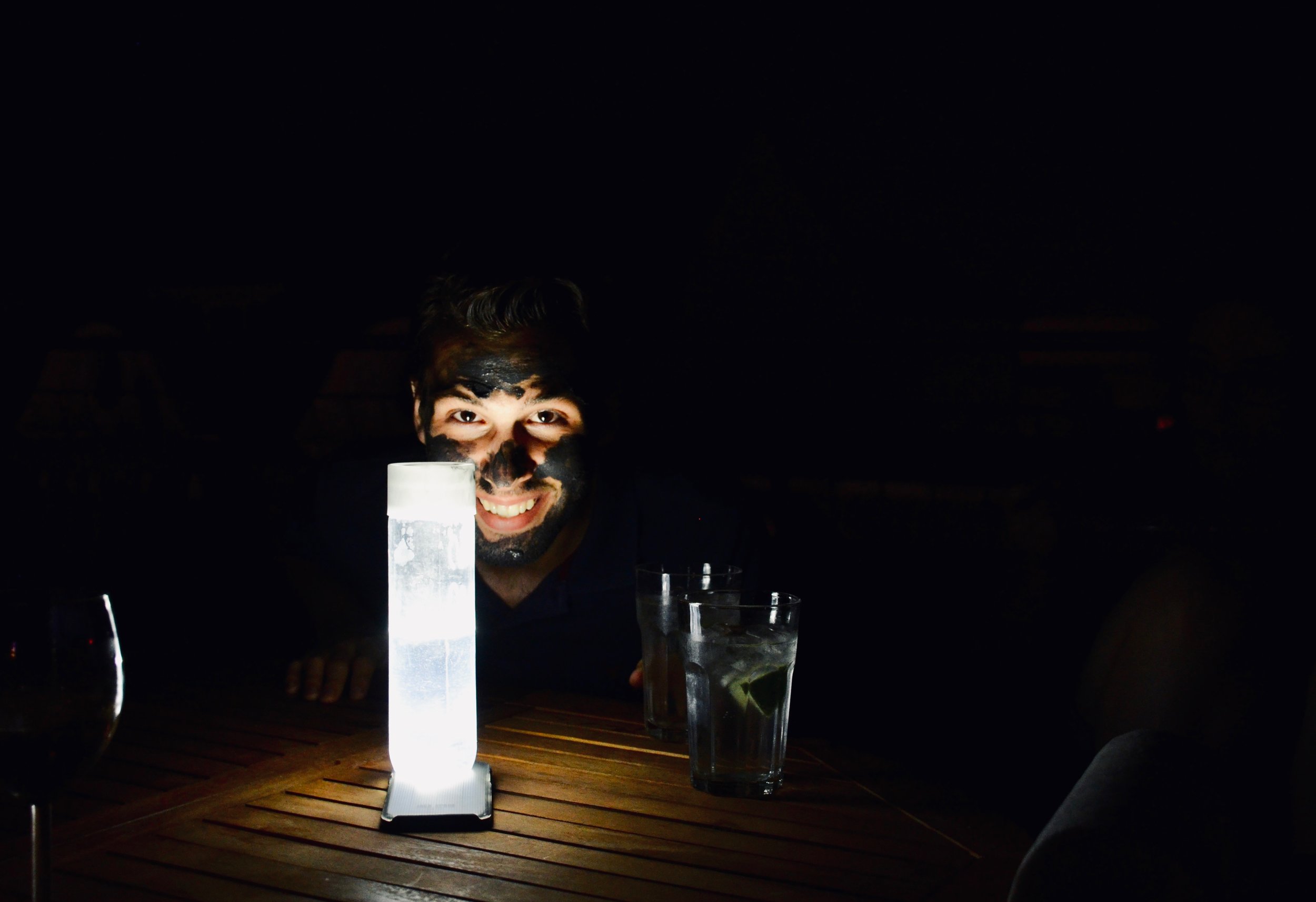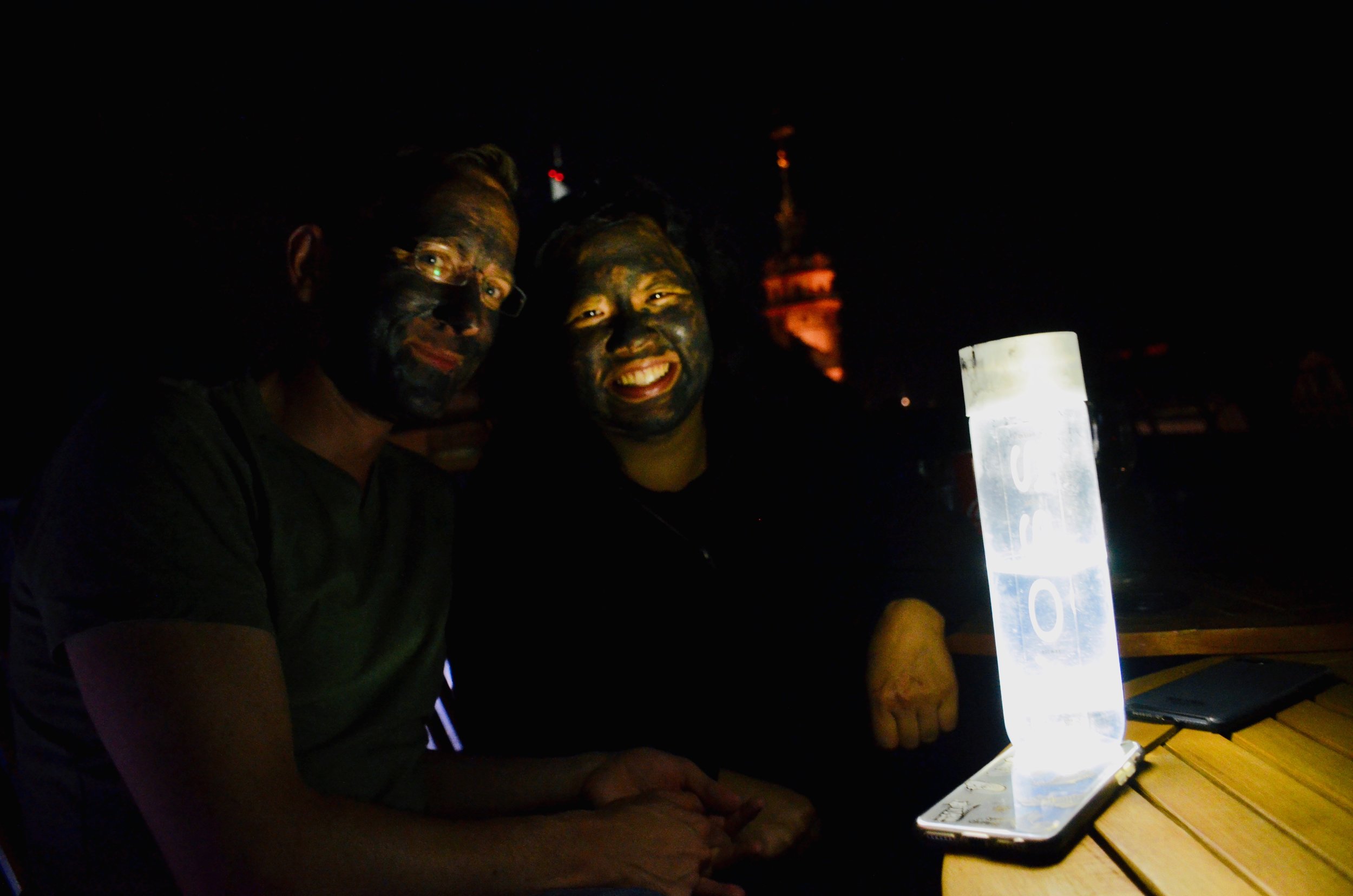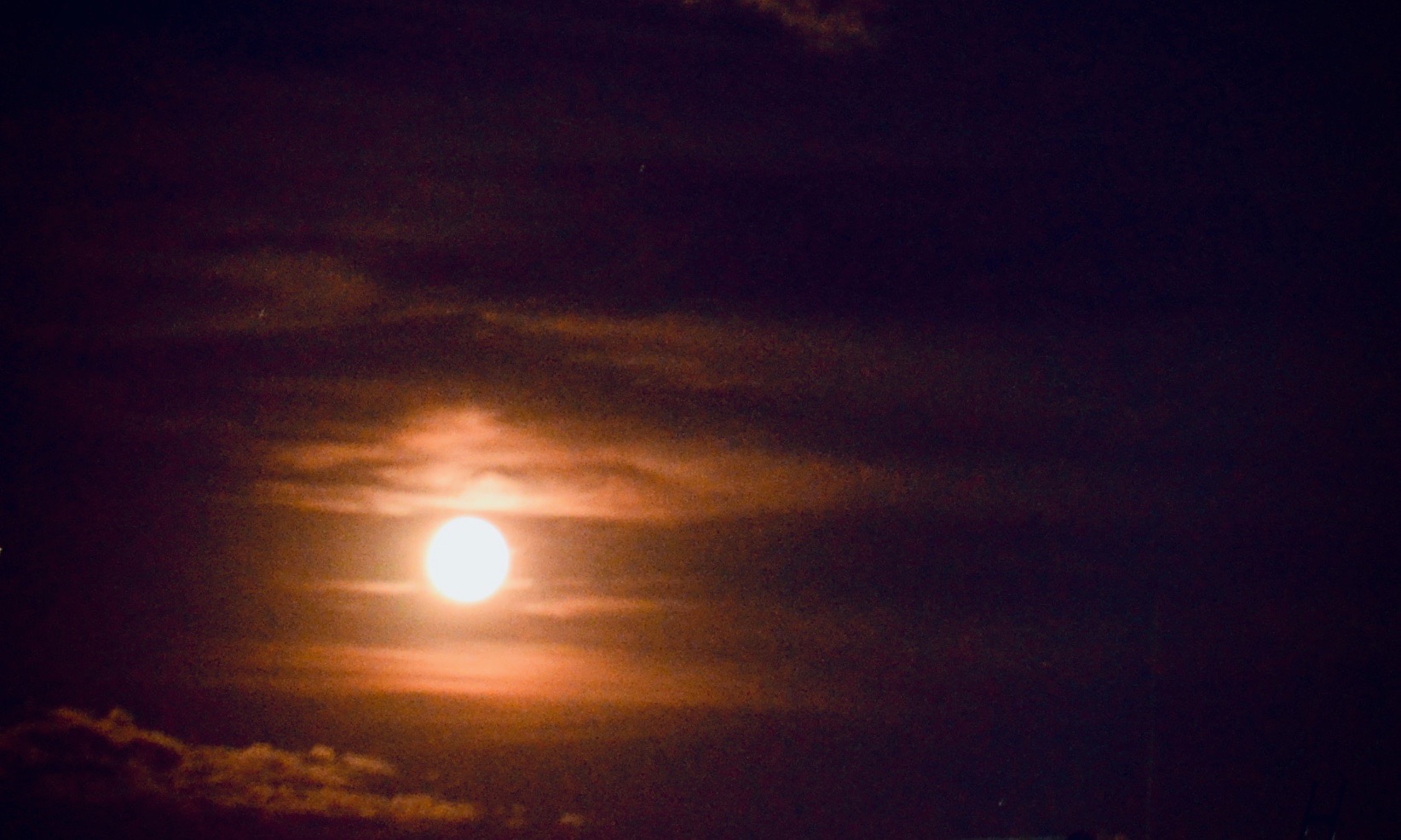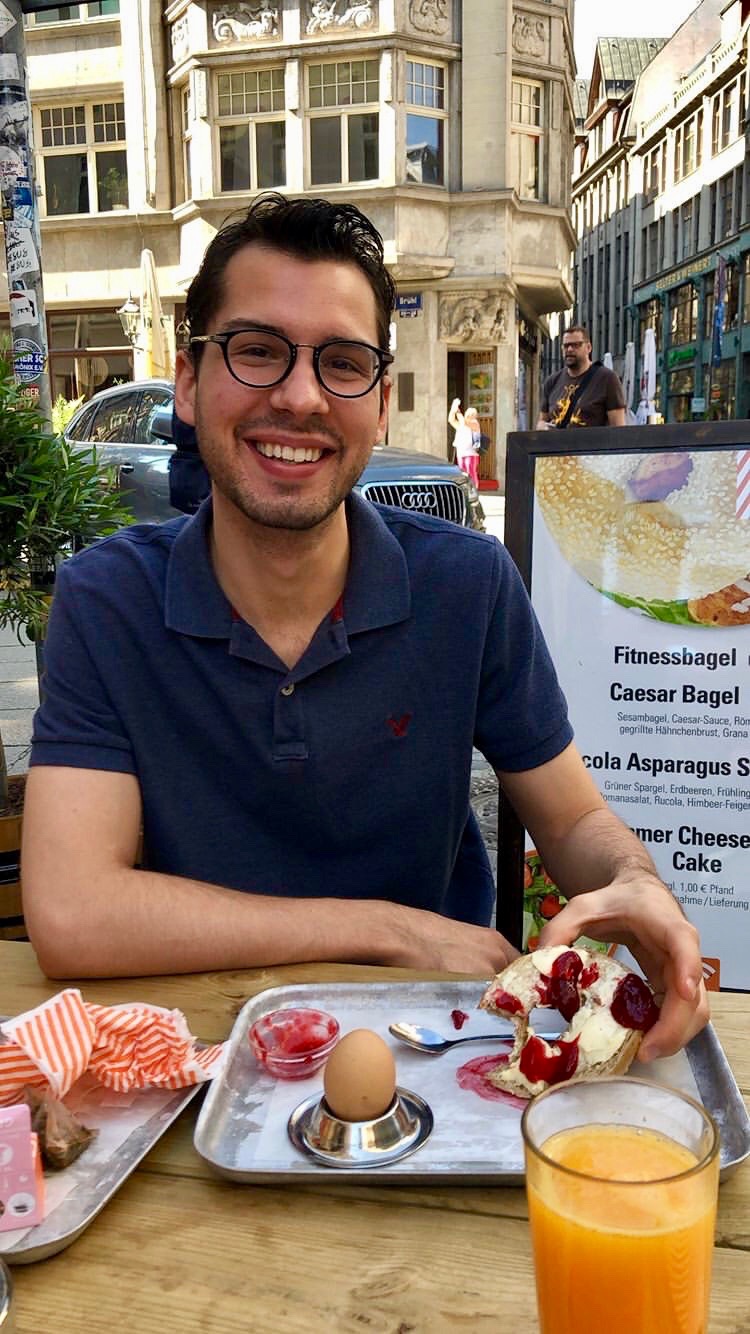Silbermann in Saxony
by Meg Cutting
Nick enjoys breakfast in Leipzig.
Tuesday began with a short trip to the grocery store, followed by eggs benedict made in-house by Alex Marin and sous-chef Chris Lane. In contrast to the previous day (when we had to leave Leipzig at 7:45 am), this morning was relaxed, and everyone got a good night’s rest. There was just one minor mishap: a slight miscommunication in our grocery list landed us with 60 eggs! But not to worry - this gave ample opportunity to perfect the technique of poaching an egg, as well as plenty of eggs for our future cooking endeavors. A few of us even opted to try ‘the bagel place’ just down the road, where we had delicious bagels, coffee, and fresh-squeezed orange juice with a hard-boiled egg on the side - European style. The weather was beautiful and temperate: a blue sky, shining sun, and a slight breeze in the air.
Freiberg, Germany.
Following breakfast, we began our hour-long drive to Freiberg, a town in Saxony. We could see the countryside as we drove further into east Germany, as well as many wind farms that are characteristic in German landscapes. Freiberg is a remarkable little town, and it especially stands out as being the home of four Silbermann instruments - one of which is a 1714 Gottfried Silbermann organ in the Dom St. Marien. This was the first large instrument constructed by the young organ builder.
1714 Gottfried Silbermann organ in Freiberg Dom.
Albrecht Koch demonstrates the 1714 Gottfried Silbermann organ in Freiberg Dom.
The organist of the Dom, Albrecht Koch, gave us a brief introduction to the organ. It is unique because it combines the French Baroque and German Baroque styles. One can find the stops for traditional organo pleno often used in German Baroque music and the characteristic German foundations, but there are French-style reeds and a five-rank Cornet in the organ as well, allowing one to create a Grands Jeux. The organo pleno is all but ordinary to say the least - it is one of the most brilliant plenums of all the organs we’ve heard thus far. This fusion of German and French lends itself to the performance of both German Baroque and French Baroque repertoire - one can easily perform J.S. Bach as well as works by Marchand and Daquin. This merge of styles had never before been seen in the organ-building world, nor was it ever repeated by Silbermann himself in his later instruments. The attempt to mesh these separate traditions was an unparalleled success, and still today the instrument speaks with such clarity and grandeur. The magnificent sounds of the organ are a statement of the exquisite craftsmanship of Silbermann and also of the continued attention given to the instrument through these last three centuries.
1735 Gottfried Silbermann organ, St. Petrikirche, Freiberg.
Organist Clemens Lucke welcomes our group to St. Petri, Freiberg.
We saw a second Silbermann organ in the church of St. Petri. This organ was built by Gottfried Silbermann in 1735 and restored in 2007. It is his largest two-manual instrument at 32 stops and 1,784 pipes. It too had a massive and magnificent sound that filled the space of the modern interior. The kantor of the Petrikirche, Clemens Lucke, told us a little bit about the church’s renovations. It was built as a late Romanesque cathedral around 1200, but in the 1970s, the interior was remodeled in a contemporary way. There is a large, abstract crucifix which hangs on a large clear window dividing the church behind the altar. The concept behind this design was the possibility of both a ‘winter’ and a ‘summer’ church in one space. Because of the vast number of historic churches in Germany, and given the lack of heating and air-conditioning capabilities, it is often necessary to have a ‘winter church’ (the structure that retained heat), and a ‘summer church’ (which I’m guessing were the majority of the churches we visited on the trip, as they were quite cool). During the 70s, the church was converted to a community center space, and the altar is minimalistic. This decade also marked the time in which the congregations of St. Petri and St. Nikolai joined together in once space. The organ itself stands as another testament to the artistry of Gottfried Silbermann, who had based himself in Freiberg to continue building organs. Coupled with the wonderful acoustic, we enjoyed listening to one another play repertoire from the late German Baroque, hearing these works the way they were intended to be heard.
Meg Cutting plays the 1735 Gottfried Silbermann organ, St. Petrikirche, Freiberg.
After our visit with these two Silbermann organs, we walked down the cobblestone streets of this quaint town and enjoyed the sunshine, taking in the views of colorful buildings and shops. Before we left, we stopped for gelato and picked up a couple baguettes from a local bäckerei (bakery).
Freiberg, Germany.
Cho, Alex, Jennifer, and Chris enjoy an evening canoe trip in Leipzig.
Back in Leipzig, we had a free evening to cook dinner and see more of the city. While Chris Porter and his crew went grocery shopping to prepare dinner, Christian, Jennifer, Alex F., and Cho went canoeing. Evan and I did some window-shopping around the city center and enjoyed a few cocktails at a local bar on Nikolaistrauße. We learned that our bartender had studied in New Hampshire during his time as a student, and we spoke about our travelling to Germany to play historic organs.
At the apartment, Nick was busy preparing his famous eggplant parmesan with a side of penne and fresh salad. Glasses of wine were pouredwhile dishes and silverware were set out. Around 9 pm, we gathered on the rooftop for dinner and enjoyed a wonderful meal with a late sunset and views of the city, including the steeple of the Nikolaikirche.
Dinner on the roof deck!
Chris and Jennifer, with face masks applied (and Nikolai in the background).
Following dinner, many of us tried face masks, something Evan and I had talked about doing since day one of the trip. We found some charcoal masks at an apotheke (drug store), and peer-pressured chef Nick to join us. Others followed suit, and soon there were seven ghost-like faces laughing up on the rooftop, glasses of wine in hand (hopefully we didn’t scare our German neighbors who were also enjoying the night air). Afterwards, everyone felt refreshed after the long travel day.
It is impossible to compare the instruments we’ve seen on the trip, but it was a tremendous opportunity to get to know the organs of Gottfried Silbermann. For me, it was my second visit to the 1714 Silbermann organ (and my first visit to all the rest!). To be reminded of the sounds and colors of that organ was a fulfilling and breathtaking experience. Playing the instruments over this past week has only fueled my desire to learn more music, see more organs, and return to Germany soon!
